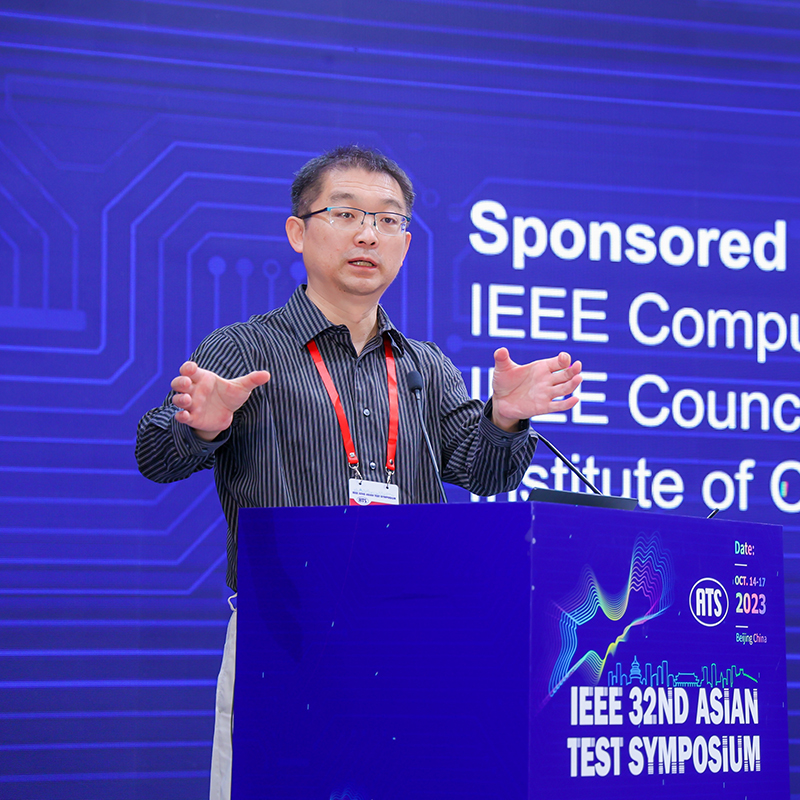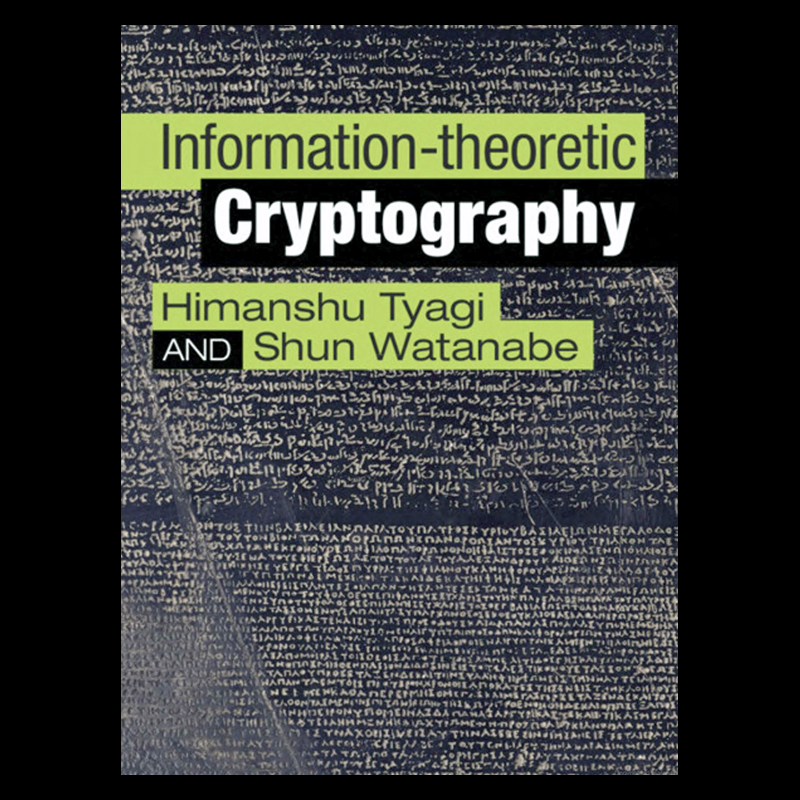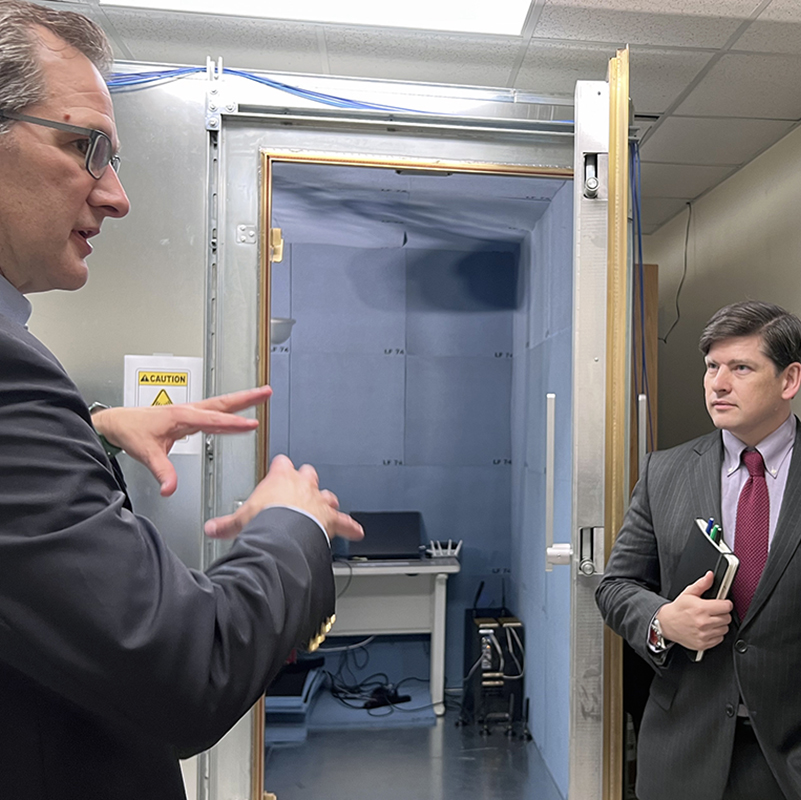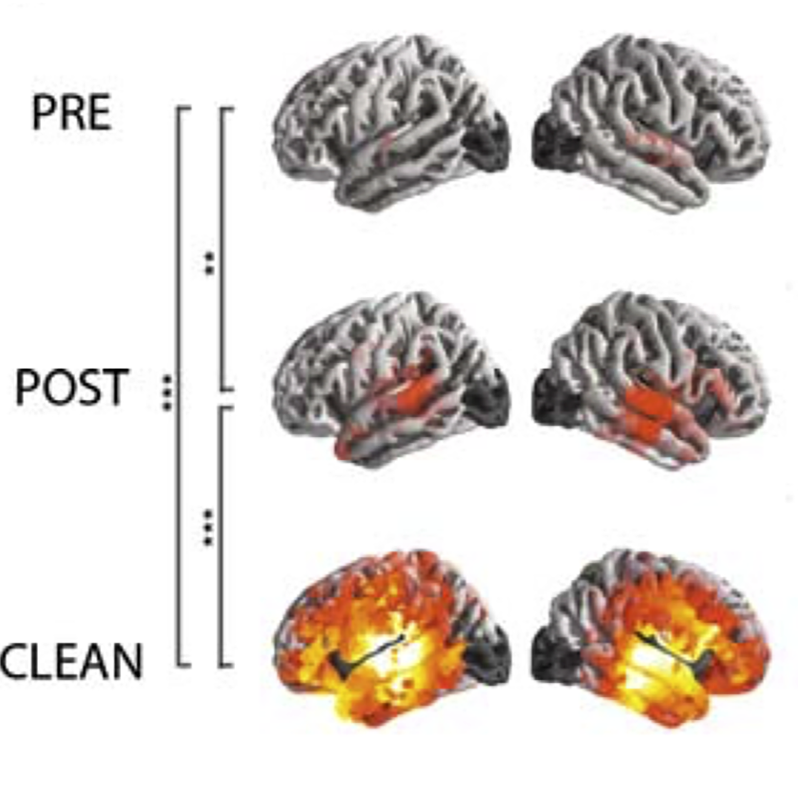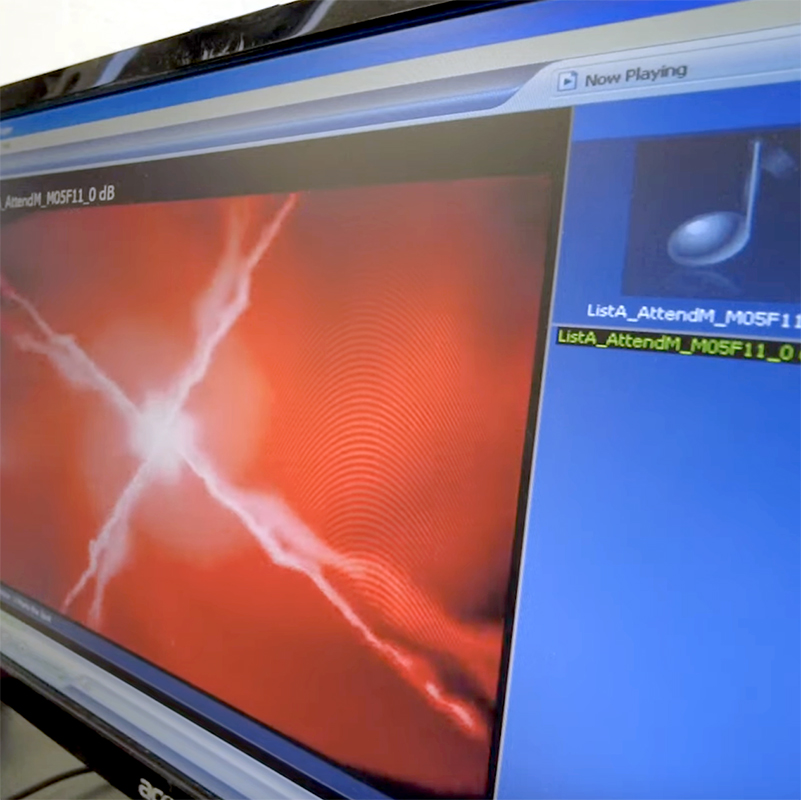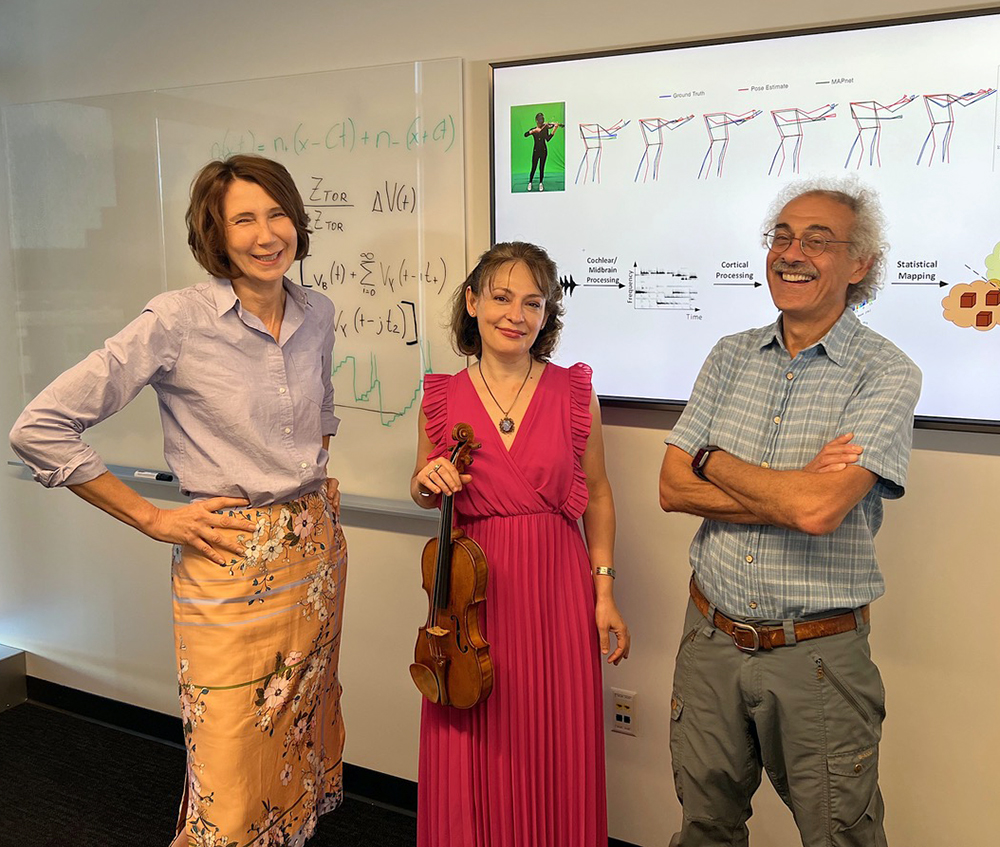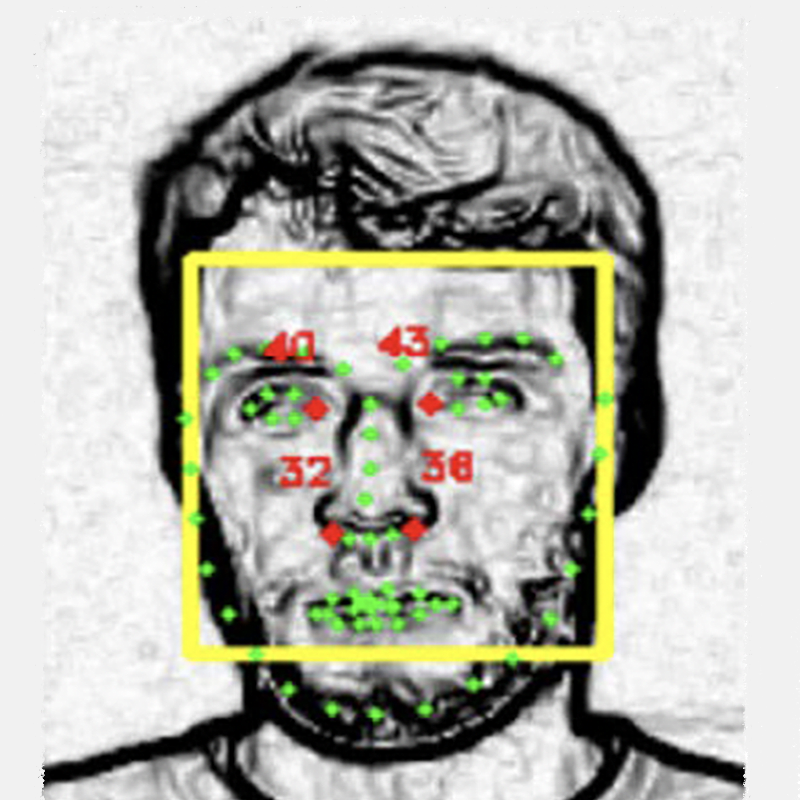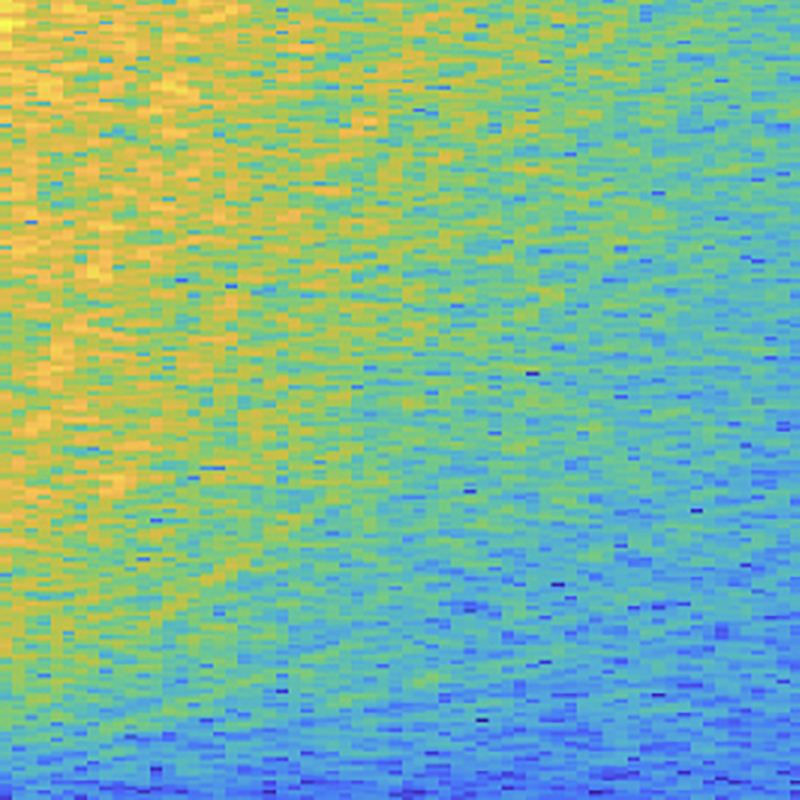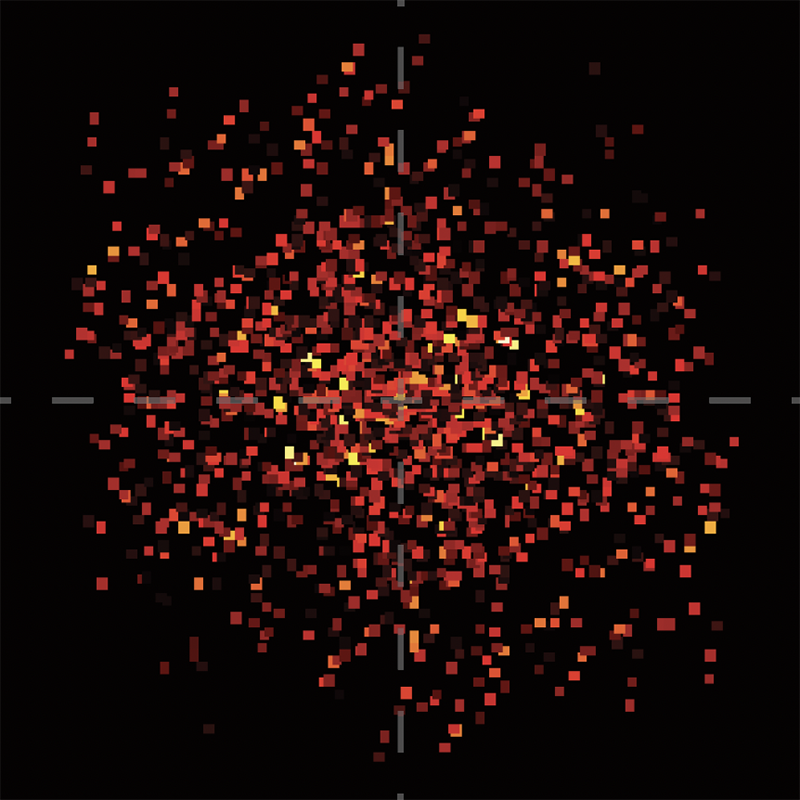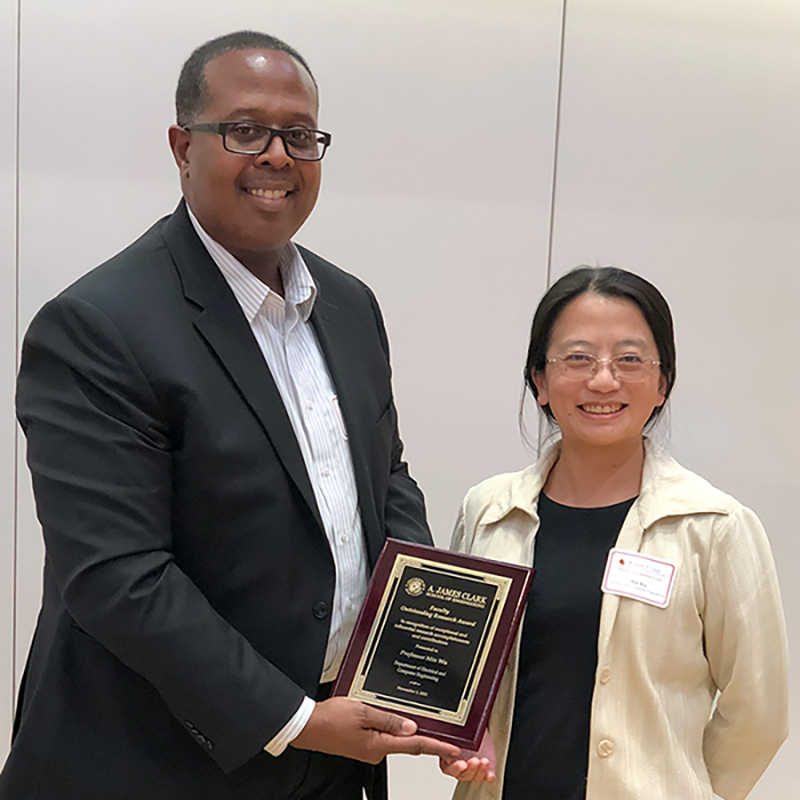2023
Christos N. Mavridis, Aris Kanellopoulos, Kyriakos G. Vamvoudakis, John Baras, Karl Henrik Johansson
Addresses the problem of identifying the cognitive ability level of agents attacking a cyber-physical system.
KTH website paper
Anousheh Gholami, Nariman Torkzaban, John Baras
Proposes a practical two-time-scale resource provisioning framework for E2E network slicing under demand uncertainty.
arXiv.org
Nariman Torkzaban, Mohammad Amir Khojastepour, Mohammad Farajzadeh-Tehrani, John Baras
The next generation of wireless communication systems aims to address the ever‑increasing demand for high throughput, low latency, better quality of service, and ubiquitous coverage. While the abundance of bandwidth available at the mmWave frequency range is considered a key to realizing next-generation wireless promises, mmWave suffers from high path loss and poor scattering and diffraction, and is vulnerable to shadowing, blockages and blind spots, especially in urban areas. This paper introduces the concept of “multi‑beamforming,” to address the design of beams consisting of multiple disjoint lobes to cover different blind spots using sharp, high gain, and effective beam patterns.
ITU Journal on Future and Evolving Technologies (ITU J-FET) special issue on Intelligent surfaces and their applications towards wide-scale deployment Best paper award
Panagiotis Nikolaidis, Asim Zoulkarni, John Baras
Considers the tradeoff between resource efficiency and performance isolation that emerges when multiplexing the resource demands of Network Slices (NSs). The analysis of this tradeoff enables network operators to determine the effect of performance isolation on the operating cost of each NS.
arXiv.org
Nariman Torkzaban, Asim Zoulkarni, Anousheh Gholami, John Baras
Non-geostationary (NGSO) satellite communications systems have attracted a lot of attention both from industry and academia over the past several years. Beam placement is among the major resource allocation problems in multi-beam NGSO systems. In this paper, the authors formulate the beam placement problem as a Euclidean disk cover optimization model. They aim at minimizing the number of placed beams while satisfying the total downlink traffic demand of targeted ground terminals without exceeding the capacity of the placed beams. They present a low- complexity deterministic annealing (DA)-based algorithm to solve the NP-hard optimization model for near-optimal solutions.
arXiv.org
2022
Faizan M. Tariq, Nilesh Suriyarachchi, Christos Mavridis, John Baras
Safe overtaking, especially in a bidirectional mixed-traffic setting, remains a key challenge for Connected Autonomous Vehicles (CAVs). The presence of human-driven vehicles (HDVs), behavior unpredictability, and blind spots resulting from sensor occlusion make this a challenging control problem. To overcome these difficulties, the authors propose a cooperative communication-based approach that utilizes the information shared between CAVs to reduce the effects of sensor occlusion while benefiting from the local velocity prediction based on past tracking data.
2022 IEEE 25th International Conference on Intelligent Transportation Systems (ITSC)
Panagiotis I. Nikolaidis, John Baras
Proposes an online resource allocation scheme for end-to-end network slices. The scheme is based on an optimization problem, where bandwidth allocation is jointly performed in the radio access network, and service function chain is embedded in the core network. The scheme has polynomial time complexity and is fast and highly scalable with respect to the number of users.
2021 IEEE Global Communications Conference (GLOBECOM)
Erfaun Noorani, Yagiz Savas, Alec Koppel, John Baras, Ufuk Topcu, Brian M. Sadler
Considers a group of agents that estimate their locations in an environment through sensor measurements and aim to transmit a message signal to a client via collaborative beamforming.
2021 55th Asilomar Conference on Signals, Systems, and Computers
Nariman Torkzaban, Mohammad Amir Khojastepour, John Baras
To overcome high path loss and the intense shadowing in millimeter-wave (mmWave) communications, effective beamforming schemes are required which incorporate narrow beams with high beamforming gains. The mmWave channel consists of a few spatial clusters each associated with an angle of departure (AoD). The narrow beams must be aligned with the channel AoDs to increase the beamforming gain. This is achieved through a procedure called beam alignment (BA). The authors propose efficient BA schemes in presence of multipath.
arXiv.org
2021
Dipankar Maity, David Hartman, John Baras
The authors consider the classical sensor scheduling problem for linear systems where only one sensor is activated at each time. They show that the sensor scheduling problem has a close relation to the sensor design problem and the solution of a sensor schedule problem can be extracted from an equivalent sensor design problem. They also propose a convex relaxation to the sensor design problem and a reference covariance trajectory is obtained from solving the relaxed sensor design problem.
arXiv.org
Nariman Torkzaban, John Baras
SDN-enabled Integrated satellite-terrestrial networks (ISTNs), can provide several advantages including global seamless coverage, high reliability, low latency, etc. and can be a key enabler towards next generation networks. To deal with the complexity of the control and management of the integrated network, leveraging the concept of software-defined networking (SDN) will be helpful. In this regard, the SDN controller placement problem in SDN-enabled ISTNs becomes of paramount importance. The authors formulate an optimization problem for the SDN controller placement with the objective of minimizing the average failure probability of SDN control paths to ensure the SDN switches receive the instructions in the most reliable fashion.
arXiv.org
Anousheh Gholami, Nariman Torkzaban, John Baras
The paper proposes trust as a measure to evaluate the status of network agents and improve the decision making process. The authors interpret trust as a relation among entities that participate in various protocols.
arXiv.org
Touraj Soleymani, John Baras, Sandra Hirche, Karl Johansson
The rate-regulation trade-off defined between two objective functions, one penalizing the packet rate and the other, the state deviation and control effort, can express the performance bound of a networked control system. However, the characterization of the set of globally optimal solutions in this trade-off for multi-dimensional controlled Gauss-Markov processes has been an open problem. In the present article, we characterize a policy profile that belongs to this set. We prove that such a policy profile consists of a symmetric threshold triggering policy, which can be expressed in terms of the value of information, and a certainty-equivalent control policy, which uses a conditional expectation with linear dynamics.
arXiv.org
Nariman Torkzaban, John Baras
Several challenging optimization problems arise while considering the deployment of the space-air-ground integrated networks (SAGINs), among which the optimal satellite gateway deployment problem is of significant importance. Moreover, with the increasing interest in the software-defined integration of 5G networks and satellites, the existence of an effective scheme for optimal placement of SDN controllers, is essential. The authors discuss the interrelation between the two problems above and propose suitable methods to solve them under various network design criteria.
arXiv.org
Siyi Wang, Qingchen Liu, Precious Ugo Abara, John Baras, Sandra Hirche
The authors address the trade-off between control performance and communication cost for a multi-loop NCS. They analytically characterize the relationship between quality of control and VoI function. The derived VoI functions properly reflect the relevance of information including temporal aspects for the control task and are parameterized by the coupling variables such as delay induced by the network. The data packet is transmitted through the network whenever the value of information is positive to preserve the control tasks. Finally, the numerical simulation is provided to verify the effectiveness of the VoI-based scheduling policy.
arXiv.org
2020
Christos Mavridis, Nilesh Suriyarachchi, John Baras
Considers the problem of defending against adversarial attacks from UAV swarms performing complex maneuvers,driven by multiple, dynamically changing, leaders.
GameSec 2020 Conference
Nariman Torkzaban, John Baras
Introduces a framework for the path-based trust-aware service chain embedding problem. The paper extends a previous work on trust-aware service chain embedding with generalizing the role of trust by incorporating the trustworthiness of the service network links and substrate network paths into the SFC embedding decision process.
arXiv.org
Nariman Torkzaban, Anousheh Gholami, Chrysa Papagianni, John Baras
Introduces the joint satellite gateway placement and routing problem over an ISTN, for facilitating terrestrial-satellite communications while adhering to propagation latency requirements, in a cost-optimal manner. The corresponding load between selected gateways is also balanced.
arXiv.org
Mohammad Mamduhi, Dipankar Maity, John Baras, Karl Johansson
In the design of cyber-physical systems (CPS) where multiple heterogeneous physical systems are coupled via a communication network, a key aspect is to study how network services are distributed among the users. The authors derive the joint optimal time-sensitive control and service allocation policies for each physical system.
KTH Royal Institute of Technology, Stockholm
Erfaun Noorani, Yagiz Savas, Alec Koppel, John Baras, Ufuk Topcu, Brian M. Sadler
In this wireless networks paper, the authors formulate a subset selection problem that aims to find a subset of agents, each of which is equipped with an idealisotropic antenna, that forms a reliable communication linkwith a client through beamforming. They present three algorithms for solving the subset selection problem, and discussed their computational complexity and optimality. All the proposed algorithms can be thought of as attempts towards approximate trade-off analysis and attempts towards finding desirable Pareto points.
arXiv.org
2022
Dana Dachman-Soled, Huijing Gong, Tom Hanson, and Hunter Kippen
This work focuses on new methods for integrating hints into a Distorted Bounded Distance Decoding Problem instance. The authors introduce a variant of the DBDD which they call Ellipsoidal Bounded Distance Decoding (EBDD), and view an EBDD instance as providing the promise that the correct solution is the unique lattice point contained in an ellipsoid. We then view “hints” as geometric operations on the EBDD ellipsoid. Our approach allows us to introduce two new types of hints: (1) Inequality hints, corresponding to the region of intersection of an ellipsoid and a halfspace; (2) Combined hints, corresponding to the region of intersection of two ellipsoids.
Cryptology ePrint Archive
Dana Dachman-Soled, Julian Loss, Adam O’Neill, Nikki Sigurdson
The authors investigate the relationship between the classical RSA and factoring problems when preprocessing is considered. Specifically, they investigate whether there is a superpolynomial gap between the runtime of the best attack on RSA with preprocessing and on factoring with preprocessing. Their main result rules this out with respect to algorithms in a natural adaptation of the generic ring model to the preprocessing setting. In particular, in this setting the authors show the existence of a factoring algorithm (albeit in the random oracle model) with polynomially related parameters, for any setting of RSA parameters.
Cryptology ePrint Archive
Michael Fahr Jr., Hunter Kippen (UMD), Andrew Kwong, Thinh Dang, Jacob Lichtinger, Dana Dachman-Soled (UMD),Daniel Genkin, Alexander Nelson, Ray Perlner, Arkady Yerukhimovich, Daniel Apon
The authors recover the private key material of the FrodoKEM key exchange mechanism as submitted to the NIST Post Quantum Cryptography (PQC) standardization process. The new mechanism that allows for this is a Rowhammer-assisted \emph{poisoning} of the FrodoKEM Key Generation (KeyGen) process. The Rowhammer side-channel is a hardware-based security exploit that allows flipping bits in DRAM by “hammering” rows of memory adjacent to some target-victim memory location by repeated memory accesses. Using Rowhammer, the FrodoKEM software is induced.
2022 ACM Conference on Computer and Communications Security
2023
Congcong Chen, Jinhua Cui, Gang Qu, Jiliang Zhang
Memory-disk synchronization is a critical technology for ensuring data correctness, integrity, and security, especially in systems that handle sensitive information like financial transactions and medical records. The authors propose SYNC+SYNC, a group of attacks that exploit the memory-disk synchronization primitives.
33rd USENIX Security Symposium
Yongliang Chen, Xiaole Cui, Pengyuan Yang, Gang Qu
Watermarking is an effective way to protect the intellectual properties of hardware. The polymorphic gate based watermarking technique was recently proposed where certain standard logic gates are replaced by polymorphic gates to embed watermarks. However, the special structure of the polymorphic gates makes them distinguishable from the standard logic gates. It enables the attacker to discover the watermarks after reverse engineering, and to remove them by replacing the polymorphic gates with the functional equivalent standard cells. The polymorphic watermarking method proposed in this paper enhances the hardware watermarks against the removal attacks by reducing the IP's quality once the watermark is removed.
2023 IEEE/ACM International Conference on Computer Aided Design (ICCAD)
Chaoqun Shen, Gang Qu, Jiliang Zhang
Runahead execution is a continuously evolving microarchitectural technique for processor performance. This paper introduces the first transient execution attack on the runahead execution, called SPECRUN, which exploits the unresolved branch prediction during runahead execution.
arXiv.org
Liang Zhang, Minhui Ge, Gang Qu
Aiming at the problems existing in the practical application of zero trust scheme, this paper uses access record table, data classification and user dynamic risk measurement to realize data security risk control, and estimates data security level based on real-time data access situation. The dynamic risk measurement algorithm can realize real-time tracking of users' unauthorized access risk, avoid the performance bottleneck of the access control policy engine, and realize fast and effective risk assessment.
Proceedings of the SPIE Third International Conference on Green Communication, Network, and Internet of Things (CNIoT 2023)
W Fu, K Yang, RG Dutta, X Guo, Gang Qu
This paper presents LLM4SecHW, a novel framework for hardware debugging that leverages domain-specific Large Language Model.
2023 Asian Hardware Oriented Security and Trust Symposium (AsianHOST)
Rihui Sun, Pengfei Qiu, Yongqiang Lyu, Jian Dong, Haixa Wang, Dongsheng Wang, Gang Qu
The authors demonstrate that well-trained machine learning models are robust against hardware fault injection attacks when the faults are generated randomly. However, they discover that these models have components, called sensitive targets, that are vulnerable to faults. By exploiting this vulnerability, the authors propose the Lightning attack, which precisely strikes the model’s sensitive targets with hardware-induced transient faults based on the Dynamic Voltage and Frequency Scaling (DVFS).
ACM Transactions on Design Automation of Electronic Systems
Yongqiang Lyu, Rihui Sun, Gang Qu
Processor security vulnerability discovery has drawn increasing attention since the disclosure of Meltdown, Spectre and other vulnerabilities. This paper presents a concise roadmap of this emerging research direction from the simple manual discovery to automated discovery methodologies, as well as the major challenges along the roadmap.
2023 60th ACM/IEEE Design Automation Conference (DAC)
Chang Liu, Yongqiang Lyu, Haixia Wang, Pengfei Qiu, Dapeng Ju, Gang Qu, Dongsheng Wang
In this paper, the authors first reverse engineer the undocumented features of ARM MDU, then discover three potential user-privilege attacks to leak secret data via MDU: cross-process attack that allows users to communicate through a convert channel, cross-domain attack that leaks kernel information and a new variant of inner-process and inter-processes Spectre attacks.
2023 60th ACM/IEEE Design Automation Conference (DAC)
Liang Zhang, Gang Qu, Minhui Ge, Guohui Shen, Jing Chen
In recent years, with the continuous development of the electric power industry in China, the per capita electricity consumption is increasing, and the scale of the power grid is also expanding. To ensure the power supply and continuity, a complete power supply system and power dispatching (PD) system must be established. At the same time, the key information privacy protection technology (PPT) of PD has also become the focus of the current power sector. Based on sensitive data (SD), this paper studies and analyzes the PPT of key information in PD. It discusses the key issues of SD security management and anti disclosure technology, as well as the advantages of SD security management and anti disclosure system model. The overall design of PD system is analyzed, and the PPT of key information of PD is studied based on SD. Finally, the effectiveness of PPT in this paper is verified through the evolution trend analysis of privacy leakage degree with the number of releases.
Second International Conference on Electronic Information Technology (EIT 2023)
Yuntao Wei, Xueyan Wang, Shangtong Zhang, Janlei Yang, Xiaotao Jia, Zhaohao Wang, Gang Qu, Weisheng Zhao
Aggregating features from neighbor vertices is a fundamental operation in Graph Convolution Network (GCN). However, the sparsity in graph data creates poor spatial and temporal locality, causing dynamic and irregular memory access patterns and limiting the performance of aggregation on the Von Neumann architecture. The emerging processing-in-memory (PIM) architecture is based on emerging non-volatile memory (NVM), like Spin-orbit torque Magnetic RAM (SOT-MRAM), and demonstrates promising prospects in alleviating the Von Neumann bottleneck. However, the limited memory capacity of PIM medium still incurs non-negligible data movements between PIM architecture and external memory. To solve this challenge, we propose a SOT-MRAM based in-memory computing architecture, called IMGA, for efficient in-situ graph aggregation. Specifically, we design adaptive data flow management strategies that reuse vertex data in MRAM when processing graphs of different scales and adopt edge data as the control signal source to utilize the graph’s structural information. A reordering optimization strategy leveraging hardware-software co-design principle is proposed to further reduce the costly data movement. Experimental results demonstrate that IMGA achieves an average 2523x and 21x speedup, and 1.03E+6 and 1.04E+3 energy efficiency compared with CPU and GPU, respectively.
IEEE Transactions on Computer-Aided Design of Integrated Circuits and Systems
Pengfei Qiu, Qiang Gao, Chang Liu, Dongsheng Wang, Yongqiang Lyu, Xiaoyong Li, Chunlu Wang, Gang Qu
Performance Monitor Unit (PMU) is an important hardware module in mainstream processors, which counts various architectural and microarchitectural events during the run-time of the processor. Theoretically, if an instruction is executed but doesn’t successfully retire (this is called transient execution), the events it triggers needn’t be recorded by PMU. However, in this study, the authors discover that current PMU implementations are capable of recording some events that are triggered in transient executions, which is a hardware vulnerability. Based on this vulnerability, they propose a new kind of side channel attack that enables attackers to maliciously leak secret data in transient executions.
IEEE Transactions on Circuits and Systems I: Regular Papers
Pengfei Qiu, Qiang Gao, Dongsheng Wang, Yongqiang Lyu, Chang Liu, Xiaoyong Li, Chunlu Wang, Gang Qu
The processor's Performance Monitor Unit (PMU) allows the recording of architectural and microarchitectural events for profiling purposes. In this study, the authors reveal a security issue caused by the fact that current PMU implementations are capable of recording some events that happened during transient executions. They propose the PMU-Spill attack, a new kind of attack that enables attackers to maliciously leak the secret data in transient executions. They demonstrate on real hardware that PMU -Spill attack can leak the secret data stored in Intel Software Guard Extensions (SGX). In addition, they perform a thorough study to reveal all the vulnerable PMU counters and find that 20 of them can be used to achieve PMU -Spill attack. The experiments suggest that the throughput of PMU -Spill attack is up to 575.3 bytes per second (Bps) with an average error rate of 1.89% when leaking the SGX-protected secret data.
2022 Asian Hardware Oriented Security and Trust Symposium (AsianHOST)
Pengfei Qiu, Qiang Gao, Dongsheng Wang, Yongqiang Lyu, Chang Liu, Chunlu Wang, Rihui Sun, Gang Qu
Performance Monitor Unit (PMU) is a special hardware module in processors that contains a set of counters to record various architectural and micro-architectural events. In this paper, the authors propose PMU-Leaker, a novel realization of all existing cache side-channel attacks where accurate execution time measurements are replaced by information leaked through PMU.
28th Asia and South Pacific Design Automation Conference (ASPDAC '23), Tokyo
Jiliang Zhang, Chaoqun Shen, Gang Qu
The Mutual Exclusion and Synchronization Mechanism (MESM) is a basic process management mechanism in modern operating systems that has serious vulnerabilities. In this paper, a new set of MESM-based software covert channels, named Mex+Sync, are proposed to transmit confidential information. Mex+Sync offer several advantages: 1) the covert channels are constructed at the software level and can be deployed on any hardware; 2) the closed shared resource ensures the quality of the channels with low interference and makes them hard to be detected; and 3) the attack uses the system’s software resources which abound and hence difficult to isolate.
IEEE Transactions on Computer-Aided Design of Integrated Circuits and Systems
Ming Han, Ye Wang, Jian Dong, Heng Liu, Jin Wu, Gang Qu
Spiking Neural Networks (SNN) update their neurons' states, the most energy consuming action, only after receiving or firing spikes for energy efficiency. So reducing the number of spikes would lead to more efficient SNN implementations. We propose an approximate temporal coding (ATC) for this purpose. Because the reduction of spikes leads to more synapses being used rarely, we develop a pruning method for further energy improvement. Experimental results validate the efficiency of ATC and the pruning method. On the MNIST dataset, for example, 61% of the spikes are reduced, leading to 60% energy saving without any accuracy loss.
Proceedings of the Great Lakes Symposium on VLSI 2023
Wei Zhou, Aijiao Cui, Cassie Chen, Gang Qu
Scan-based side-channel attacks have become a severe threat to the security of cryptographic chips and locking mechanisms are one of the most effective methods against these attacks. However, securing the test key that locks the scan but must be shared among test engineers arises as a new challenge. In this paper, the authors solve this challenge by adopting the physical unclonable function (PUF) design to generate test keys that are unique for each chip. A one-time programming structure (OTPS) is used when the PUF response is first generated to improve its reliability. The security of the PUF response is achieved by obfuscation such that it can be retrieved only when a specific validation test vector presents. The researchers implement the proposed secure scan design by reusing the original scan chain to reduce overhead and demonstrate that the proposed secure scan design can protect the crypto chips against all existing scan-based side-channel attacks while incurring negligibly low overhead.
2023 24th International Symposium on Quality Electronic Design (ISQED)
Yihao Yang, Pengfei Qiu, Chunlu Wang, Yu Jin, Dongsheng Wang, Gang Qu
Performance Monitoring Unit (PMU) is a common hardware module in Intel CPUs that can be used to record various CPU behaviors; it is often used for performance analysis and optimization. Of the 65536 event spaces, Intel has officially published only 200 or so. Here, the authors design a hidden PMU event collection method. They find a large number of undocumented PMU events in CPUs of Skylake, Kabylake, and Alderlake microarchitectures. They also demonstrate the existence of these events by using them for transient execution attack detection and build-side channel attacks. This implies these hidden PMU events have huge potential to be exploited and threaten security.
arXiv.org
Yu Jin, Pengfei Qiu, Chunlu Wang, Yihao Yang, Dongsheng Wang, Gang Qu
The authors discover a vulnerability that the change of the EFLAGS register in transient execution may have a side effect on the Jcc (jump on condition code) instruction after it in Intel CPUs. Based on our discovery, we propose a new side-channel attack that leverages the timing of both transient execution and Jcc instructions to deliver data.
arXiv.org
2022
Yuqian Pan, Zhaojun Lu, Haichun Zhang, Haoming Zhang, Md Tanvir Arafin, Zhenglin Liu, Gang Qu
NAND flash memory offers fast erase and write times, and delivers density at a low cost per bit, while offering greater endurance than its competitor, NOR flash memory. However, NAND flash memory storage is prone to wear, erasure, crosstalk and sensitivity that affect performance and reliability. Estimates known as “lifetime predictions” can help users know when their NAND memory is likely to fail. But such prediction operations can use up resources and are often redundant. This research proposes techniques that can minimize redundant prediction operations by exploiting reliability variation for NAND flash memory devices.
IEEE Transactions on Computers
Chaoqun Shen, Jiliang Zhang, Gang Qu
Multi-process concurrency is effective in improving program efficiency and maximizing CPU utilization. The correct execution of concurrency is ensured by the mutual exclusion and synchronization mechanism (MESM) that manages the shared hardware and software resources. MES-Attacks is a new set of software-controlled covert channel attacks based on MESM to transmit confidential information.
arXiv.org
Omid Aramoon, Gang Qu, Aijiao Cui
Scan chain is typically used to provide test engineers with complete controllability and observability to the circuit under test to reduce the complexity of VLSI testing. However, it should not be dismissed as just a one-hit-wonder that merely facilitates the test of digital circuits. This study presents a comprehensive review of the recent proposals on how scan chain design can present its versatility as security primitives in different areas of hardware security. More specifically, the authors elaborate its usage in hardware intellectual property watermarking, fingerprinting, and metering, as well as in the design of physical unclonable functions and counterfeit detection. They analyze the challenges and opportunities in building hardware security primitives using modern scan-based design-for-testability (DfT).
IEEE 65th International Midwest Symposium on Circuits and Systems (2022)
Pengfei Qiu, Yongqiang Lyu, Haixia Wang, Dongsheng Wang, Chang Liu, Qiang Gao, Chunlu Wang, Rihui Sun, Gang Qu
Performance Monitor Unit (PMU) is a significant hardware module on current processors, which counts the events launched by processor into a set of PMU counters. Ideally, the events triggered by instructions that are executed but not successfully committed (transient execution) should not be recorded. However, in this study, Gang Qu and eight colleagues from Tsinghua University, Harbin Institute of Technology and the Beijing University of Posts and Telecommunications in China, discover that some PMU events triggered by the transient execution instructions will actually be recorded by PMU. Based on this, they propose the PMUSpill attack, which enables attackers to maliciously leak the secret data that are loaded during transient executions.
arXiv.org
Jiliang Zhang, Lin Ding, Zhuojun Chen, Wenshang Li, Gang Qu
Gang Qu and four colleagues from Hunan University in Changsha, China, propose a novel dual-state analog PUF (DA PUF) which has been successfully fabricated in 55nm process. Physical unclonable function (PUF) is a promising lightweight hardware security primitive that exploits process variations during chip fabrication for applications such as key generation and device authentication. Reliability of the PUF information plays a vital role and poses a major challenge for PUF design.
Proceedings of the 59th ACM/IEEE Design Automation Conference (DAC '22)
Qian Xu, Md Tanvir Arafin, Gang Qu
Diverse and comprehensive training data is critical in building robust machine learning (ML) models. However, model inversion attacks (MIA) have demonstrated that an ML model can leak important information about its training dataset. This work examines the existing MIAs and proposes a hardware-oriented solution to protect the training data from such attacks. The proposed solution — MIDAS: Model Inversion Defenses with an Approximate memory System — intentionally introduces memory faults to thwart MIA without compromising the original ML model.
IEEE Transactions on Emerging Topics in Computing
Wei Xiong, Yanze Li, Changpeng Sun, Hualin Luo, Jiafeng Liu, Jian Wang, Jinmei Lai, Gang Qu
Block RAMs (BRAMs) play an important role in modern heterogenous FPGAs, hence how to test them comprehensively and effectively becomes a major concern. On-chip Partial Bitstream Relocation (PBR) technique based on FPGA Dynamic Partial Reconfiguration (DPR) can decrease the time spent on configuring modules in FPGA while reducing the memory resources overhead for storing partial bitstreams of the reconfigurable modules. The previous PBR technique is difficult to be combined with BRAM test directly, because they are somehow tedious, unsuitable for large-scale design or limited to specific devices. Besides, the problem exists for BRAM testing is that fault model is still incomplete and testing algorithms need to be improved to achieve higher fault coverage. In this paper, Gang Qu and colleagues from Fudan University in Shanghai, China, propose sn effective BRAM test method based on a novel PBR technique. The test method establishes a complete fault model for BRAM and improves the testing algorithms for faults in BRAM ECC circuits and intra-word coupling faults in SRAM cells.
Proceedings of the Great Lakes Symposium on VLSI 2022
Mengqiang Lu, Aijiao Cui, Yan Shao, Gang Qu
Scan chain design can improve the testability of a circuit while it can be used as a side-channel to access the sensitive information inside a cryptographic chip for the crack of cipher key. Gang Qu and colleagues at the Harbin Institute of Technology and the Chinese Academy of Sciences in Guangdong, China, present a memristor-based secure scan design that can secure the scan design while maintaining its testability. A lock and key scheme is introduced.
Proceedings of the Great Lakes Symposium on VLSI 2022
Yanze Li, Yufan Zhang, Jiafeng Liu, Jun Gong, Jian Wang, Jinmei Lai, Xinxuan Tao, Gang Qu
Gang Qu and colleagues at Fudan University in Shanghai, China, present AutoTEA. For FPGA circuit design, exploring the FPGA design space for the optimal performance becomes important and also challenging. The popular tool COFFE was built on an academic architecture and cannot be applied to modern commercial FPGA chips with the general routing matrix (GRM) architecture. The authors report the design, implementation, and evaluation of their Automated Transistor-level Efficient and Accurate tool, AutoTEA, which extracts the key sub-circuits, uses the initial transistor sizes to construct hspice netlists, and finds the optimal circuit transistor sizes.
Integration,an Elsevier journal
Pengfei Qiu, Dongsheng Wang, Yongqiang Lyu, Gang Qu
Gang Qu and colleagues at Tsinghua University in China present CacheGuard, a behavior model checker for cache timing side-channel security. Compared to current state-of-the-art prose rule-based security analysis methods, CacheGuard covers the whole state space for a given cache design to discover unknown side-channel attacks. Checking results on standard cache and state-of-the-art secure cache designs discovers 5 new attack strategies, and potentially makes it possible to develop a timing side channel-safe cache with the aid of CacheGuard.
Invited paper at the 2022 27th Asia and South Pacific Design Automation Conference (ASP-DAC)
Zihan Xu, Lingfeng Yin, Yongqiang Lyu, Haixia Wang, Gang Qu, Dongsheng Wang
Gang Qu and colleagues at Tsinghua University have discovered a vulnerability in the implementation of the DVFS technology that allowed them to measure the processor's frequency in the userspace. By exploiting this vulnerability, they successfully implement a covert channel on the commercial Intel platform and demonstrate that the covert channel can reach a throughput of 28.41bps with an error rate of 0.53%. This work indicates that the processor's hardware information that is unintentionally leaked to the userspace by the privileged kernel modules may cause security risks.
2022 27th Asia and South Pacific Design Automation Conference (ASP-DAC)
Omid Aramoon, Pin-Yu Chen, Gang Qu
Due to their crucial role in many decision-making tasks, Deep Neural Networks (DNNs) are common targets for a large array of integrity breaches. The authors propose AID, a novel methodology to Attest the Integrity of DNNs. AID generates a set of test cases called edge-points that can reveal whether a model has been compromised. AID does not require access to parameters of the DNN and can work with a restricted black-box access to the model, which makes it applicable to most real life scenarios.
2021 58th ACM/IEEE Design Automation Conference
Xuhang Chen, Xueyan Wang, Xiaotao Jia, Jianlei Yang, Gang Qu, Weisheng Zhao
Gang Qu and colleagues from Beihang University in China propose to accelerate connected component computation with the emerging processing-in-Memory (PIM) architecture through an algorithm-architecture co-design manner. The innovation lies in computing connected component with bitwise logical operations (such as AND and OR), and the customized data flow management methods to accelerate computation and reduce energy consumption.
IEEE Transactions on Computer-Aided Design of Integrated Circuits and Systems
Timothy Dunlap, Omid Aramoon, Gang Qu, Tian Wang, Xiaoxin Cui, Dunshan Yu
The paper introduces the concept of partial polymorphic gates, which deliver multiple incomplete functions with non-deterministic outputs at certain input combinations. The non-deterministic output is a result of process variations, which are generally believed to be random, unclonable, and different from chip to chip. The authors utilize this uncertainty as a new mechanism for implementing chip IDs and propose a circuit authentication scheme based on such IDs.
2021 Asian Hardware Oriented Security and Trust Symposium (AsianHOST)
Aijiao Cui, Zhen Weng, Hui Zhang, Gang Qu, Huawei Li
SATAM is a new active metering scheme in which a new cell of switchable scannable flip-flop (WFF) is introduced to be inserted in the non-critical paths or replace some original scan cells. Without a correct key on these WFFs, the synchronization status of the original design is violated and hence the circuit logic is locked (obfuscated).
IEEE Transactions on Emerging Topics in Computing
Wei Jia, Zhaojun Lu, Haichun Zhang, and Zhenglin Liu, Jie Wang, Gang Qu
The presence of deliberately deceptive traffic signs could interfere with the real-world object detectors autonomous vehicles rely upon, resulting in life-threatening situations for the vehicles’ occupants. The researchers developed a systematic pipeline that could generate robust physical AEs to use against real-world object detectors, and concluded such physical AEs and associated attacks could result in vehicular havoc.
arXiv.org
2021
Pengfei Qiu, Rihui Sun, Jian Dong, Yongqiang Lyu, Haixia Wang, Ningxuan Feng, Peichen Guo, Gang Qu, Dongsheng Wang
A study of the impact of GPU chips hardware faults on the security of cloud "trusted" execution environment using Deep Neural Network (DNN) as the underlying application. The authors show that transient hardware faults of GPUs can be generated by exploiting the Dynamic Voltage and Frequency Scaling (DVFS) technology, and these faults may cause computation errors, but they have limited impact on the inference accuracy of DNN due to the robustness and fault-tolerant nature of well-developed DNN models. They propose the Lightning attack to locate the fault injection targets of DNNs and to control the fault injection precision in terms of timing and position. They demonstrate that the secure isolation on GPU clouds is vulnerable against transient hardware faults and the computation results may not be trusted.
The 28th ACM Symposium on Operating Systems Principles (2021)
Xueyan Wang, Jianlei Yang, Yinglin Zhao, Xiaotao Jia, Rong Yin, Xuhang Chen, Gang Qu, Weisheng Zhao
Triangles are the basic substructure of networks and triangle counting (TC) has been a fundamental graph computing problem in numerous fields such as social network analysis. Nevertheless, like other graph computing problems, due to the high memory-computation ratio and random memory access pattern, TC involves a large amount of data transfers thus suffers from the bandwidth bottleneck in the traditional Von-Neumann architecture. To overcome this challenge, the authors accelerate TC with emerging processing-in-memory (PIM) architecture through an algorithm-architecture co-optimization. They enable efficient in-memory implementations by reformulating TC with bitwise logic operations (such as AND), and develop customized graph compression and mapping techniques for efficient data flow management. With the emerging computational Spin-Transfer Torque Magnetic RAM (STT-MRAM) array, which is one of the most promising PIM enabling techniques, the device-to-architecture co-simulation results demonstrate that the proposed TC in-memory accelerator outperforms the state-of-the-art GPU and FPGA accelerations by 12.2 and 31.8, respectively, and achieves a 34 energy efficiency improvement over the FPGA accelerator.
IEEE Transactions on Computing
Ming Han, Ye Wang, Jian Dong, Gang Qu
One major challenge in deploying Deep Neural Network (DNN) in resource-constrained applications, such as edge nodes, mobile embedded systems, and IoT devices, is its high energy cost. The emerging approximate computing methodology can effectively reduce the energy consumption during the computing process in DNN. However, a recent study shows that the weight storage and access operations can dominate DNN's energy consumption due to the fact that the huge size of DNN weights must be stored in the high-energy-cost DRAM. The authors propose Double-Shift, a low-power DNN weight storage and access framework, to solve this problem. Enabled by approximate decomposition and quantization, Double-Shift can reduce the data size of the weights effectively. By designing a novel weight storage allocation strategy, Double-Shift can boost the energy efficiency by trading the energy consuming weight storage and access operations for low-energy-cost computations.
ACM Transactions on Design Automation of Electronic Systems
Guoming Zhang, Xiaoyu Ji, Xinfeng Li, Gang Qu, Wenyuan Xu
DolphinAttacks (i.e., inaudible voice commands) modulate audible voices over ultrasounds to inject malicious commands silently into voice assistants and manipulate controlled systems (e.g., doors or smart speakers). Eliminating DolphinAttacks is challenging if ever possible since it requires to modify the microphone hardware. In this paper, we design EarArray, a lightweight method that can not only detect such attacks but also identify the direction of attackers without requiring any extra hardware or hardware modification.
web.archive.org
Omid Aramoon, Gang Qu
A novel methodology to diagnose the presence of faults in the memory of DNN accelerators. The authors' method queries the protected DNN with a set of specially crafted test cases that can accurately reveal if model parameters stored in the hardware are faulty.
GLSVLSI '21: Proceedings of the 2021 on Great Lakes Symposium on VLSI
Zhenxing Chang, Aijiao Cui, Ziming Wang, Gang Qu
Sequential devices are the fundamental building blocks for almost all digital electronic systems with memory. Due to the importance of instant data recovery after unexpected data loss such as unplanned power down, sequential devices need to have the nonvolatile property, which motivates the recent research and practice in integrating the nonvolatile memristor into CMOS devices. In this paper, the authors study how to apply this approach to improve the quality of nonvolatile D latch.
22nd IEEE International Symposium on Quality Electronic Design, 2021
Omid Aramoon, Pin-Yu Chen, Gang Qu
Engineering a top-notch deep learning model is an expensive procedure that involves collecting data, hiring human resources with expertise in machine learning, and providing high computational resources. For that reason, deep learning models are considered as valuable Intellectual Properties(IPs) of the model vendors. To ensure reliable commercialization of deep learning models, it is crucial to develop techniques to protect model vendors against IP infringements. One of such techniques that recently has shown great promise is digital watermarking. The authors present GradSigns, a novel watermarking framework for deep neural networks (DNNs). GradSigns is robust against all known counter-watermark attacks and can embed a large amount of information into DNNs.
Proceedings of the 4th MLSys Conference, 2021
Yanze Li, Yufan Zhang, Jiafeng Liu, Jian Wang, Jinmei Lai, Gang Qu
With emerging applications such as AI/ML, exploring the FPGA design space for optimal performance becomes important and challenging. The popular tool COFFE was built on an academic architecture and cannot be applied directly to modern FPGA chips with GRM (general routing matrix) architecture. This paper presents a recently developed fully Automated Transistor-level Efficient and Accurate tool, AutoTEA, which features accurate area and delay models, and a fast solution space exploration method for GRM FPGA circuit optimization. The results show that AutoTEA is able to improve a previously manually optimized design (on the tape-out FPGA chip) by 11%.
IEEE 29th Annual International Symposium on Field-Programmable Custom Computing Machines
Jiliang Zhang, Chaoqun Shen, Haihan Su, Md Tanvir Arafin, Gang Qu
The paper presents machine learning-based modeling attacks to break authentication.
IEEE Transactions on Computers
Zhaojun Lu, Md Tanvir Arafin, Gang Qu
Explores the analog properties of the resistive random access memory (RRAM) crossbar and propose a scalable RRAM-based in-memory floating-point computation architeture (RIME).
ASPDAC '21: Proceedings of the 26th Asia and South Pacific Design Automation Conference
Qian Xu, Md Tanvir Arafin, Gang Qu
A survey of the security challenges and opportunities in computing hardware used in implementing deep neural networks.
ASPDAC '21: Proceedings of the 26th Asia and South Pacific Design Automation Conference
Xi Chen, Gang Qu
Digital fingerprinting was first proposed in 1999 for the protection of very large scale integration (VLSI) design intellectual properties (IP). Various techniques have been developed to make each copy of the IP unique in order to track the usage of the IP and trace any traitors who have misused the IP. The authors review the general requirements and the available schemes to create digital fingerprints for IP protection. They discuss the challenges of applying these methods for device authentication in IoT applications and how to overcome these difficulties.
Chapter 1 in Authentication of Embedded Devices (Springer book)
Md Tanvir Arafin, Gang Qu
The authors discuss hardware-oriented security applications for the authentication of users, devices, and data. These applications illustrate the use of physical properties of computing hardware such as main memory, computing units, and clocks for authentication applications in low power on the IoT devices and systems.
Chapter 6 in Authentication of Embedded Devices (Springer book)
2020
Pengfei Qui, Dongsheng Wang, Yongqiang Lyu, Gang Qu
Based on the concept of hardware separation, ARM introduced TrustZone to build a trusted execution environment for applications. It has been quite successful in defending against various software attacks and forcing attackers to explore vulnerabilities in interface designs and side channels. In this article, we propose an innovative software-controlled hardware fault-based attack, VoltJockey, on multi-core processors that adopt dynamic voltage and frequency scaling (DVFS) techniques for energy efficiency. We deliberately manipulate the processor voltage via DVFS to induce hardware faults into the victim cores, and therefore breaking TrustZone. The entire attack process is based on software without any involvement of hardware, which makes VoltJockey stealthy and hard to prevent.
ACM GetMobile: Mobile Computing and Communications
Pengfei Qui, Dongsheng Wang, Yongqiang Lyu, Gang Qu
Based on the concept of hardware separation, ARM introduced TrustZone to build a trusted execution environment for applications. It has been quite successful in defending against various software attacks and forcing attackers to explore vulnerabilities in interface designs and side channels. In this article, we propose an innovative software-controlled hardware fault-based attack, VoltJockey, on multi-core processors that adopt dynamic voltage and frequency scaling (DVFS) techniques for energy efficiency. We deliberately manipulate the processor voltage via DVFS to induce hardware faults into the victim cores, and therefore breaking TrustZone. The entire attack process is based on software without any involvement of hardware, which makes VoltJockey stealthy and hard to prevent.
ACM GetMobile: Mobile Computing and Communications
Juchuan Zhang, Xiaoyu Ji, Wenyuan Xu, Yi-Chao Chen, Yuting Tang, Gang Qu
MagView is a distributed magnetic cover channel, where sensitive information is embedded in other data such as video and can be transmitted over an air-gapped internal network.
IEEE INFOCOM 2020: IEEE Conference on Computer Communications
Qian Xu, Guowei Sun, Gang Qu
Approximate computing is a promising technique in improving the energy efficiency for error-resilient applications such as multimedia, signal processing and neural network. The paper shows how to apply the truncation method to the floating-point logarithmic operation. It analyzes the tradeoff between the precision of computation and the energy it requires, and derives a formula on the most energy-efficient implementation of the logarithm unit for a given error variance range. Based on this theoretical result, the paper proposes BWOLF (Bit-Width optimization for Logarithmic Function), which uses a sequential quadratic programming algorithm to determine the way to truncate data (i.e., bit-width optimization) in a program with logarithm and other arithmetic operations such that the energy consumption is minimized under a fixed error budget.
2020 IEEE 31st International Conference on Application-Specific Systems, Architectures and Processors
Huimin Hu, Ke Xiong, Gang Qu, Qiang Ni, Pingyi Fan, Khaled Ben Letaief
UAVs equipped with communication transceivers can be used as aerial relays or mobile base stations to help improve the performance of terrestrial wireless communication systems. This paper investigates a UAV-assisted wireless powered IoT system, where a UAV takes off from a data center, flies to each of the ground sensor nodes (SNs) in order to transfer energy and collect data form the SNs, and then returns to the data center.
IEEE Internet of Things Journal
Xueyan Wang, Jianlei Yang, Yinglin Zhao, Yingjie Qi, Meichen Liu, Xingzhou Cheng, Xiaotao Jia, Xiaoming Chen, Gang Qu and Weisheng Zhao
Triangle counting (TC) is a fundamental problem in graph analysis and has found numerous applications, which motivates many TC acceleration solutions in the traditional computing platforms like GPU and FPGA. However, these approaches suffer from the bandwidth bottleneck because TC calculation involves a large amount of data transfers. This paper proposes to overcome the challenge by designing a TC accelerator utilizing the emerging processing-in-MRAM (PIM) architecture.
arXiv.org
Gang Qu, Qidong Wang, Aijiao Cui, Huawei Li
A new secure scan design scheme for integrated circuit manufacturing with a unique PUF-based key for each design, to provide authentication and alleviate security concerns.
2020 IEEE 38th VLSI Test Symposium
Xueyan Wang, Jianlei Yang, Yinglin Zhao, Xiaotao Jia, Gang Qu, Weisheng Zhao
Computing-in-memory (CIM) could alleviate the processor-memory data transfer bottleneck in traditional Von-Neumann architectures, and spintronics-based magnetic memory has demonstrated many facilitations in implementing CIM paradigm. Hardware security has become one of the major concerns in circuit designs. This paper, for the first time, investigates spin-based CIM from a security perspective.
ACM Journal on Emerging Technologies in Computing Systems
Aikiao Cui, Mengyang Li, Gang Qu, Huawei Li
A proposal to use 'cryptographic hash' to thwart attackers seeking the cipher keys of sensitive integrated circuits during manufacturing and testing.
IEEE Transactions on Computer-Aided Design of Integrated Circuits and Systems
Pengfei Qiu, Dongsheng Wang, Yongqiang Lyu, Gang Qu
Intel software-guard extensions (SGX) allows applications to run in a trusted space (enclave), which provides a highly secure primitive for the running codes and data. The authors propose the first fault injection attack to break SGX by using voltage-induced hardware faults.
voltjockey.com
2019
Pengfei Qiu, Dongsheng Wang, Yongqiang Lyu, Gang Qu
VoltJockey is an innovative software-controlled, hardware fault-based attack on multi-core processors that adopt dynamic voltage and frequency scaling (DVFS) techniques for energy efficiency.
Proceedings of the 2019 ACM SIGSAC Conference on Computer and Communications Security
Jiliang Zhang, Gang Qu
In many Industry Internet of Things (IIoT) applications, resources like CPU, memory, and battery power are limited and cannot afford the classic cryptographic security solutions. Silicon Physical Unclonable Function (PUF) is a lightweight security primitive that exploits manufacturing variations during the chip fabrication process for key generation and/or device authentication. The paper proposes a PUF-based key sharing method for the first time.
IEEE Transactions on Industrial Electronics
Zhaojun Lu, Qian Wang, Xi Chen, Gang Qu, Yongqiang Lyu, Zhenglin Liu
Controller Area Network is standard for in-vehicle communications, but attackers can compromise to remotely control vehicles. The researchers have developed a low-cost, high-efficiency encryption and authentication protocol to improve security.
arXiv.org
Zhaojun Lu, Zhenglin Liu, Carson Dunbar, Mingze Gao, Gang Qu
This paper on intelligent transportation systems proposes pass and run protocol for vehicular delay tolerant networks to address vehicle location privacy in communicating with roadside units.
IEEE Design & Test
2023
Priya Mittu, Yuntao Liu, Ankur Srivastava
In today’s world, sending a chip design to a third party foundry for fabrication poses a serious threat to one’s intellectual property. To keep designs safe from adversaries, design obfuscation techniques have been developed to protect the IP details of the design. This paper explains how the previously considered secure algorithm, TimingCamouflage+, can be thwarted and the original circuit can be recovered.
ACM Proceedings of the Great Lakes Symposium on VLSI 2023 (GLSVLSI ’23)
2020
Michael Zuzak, Yuntao Liu, Ankur Srivastava
The paper proposes trace logic locking (TLL), a provably secure and scalable enhancement to existing logic locking techniques which locks a sequence of primary inputs, known as a trace. Through architectural simulations, the paper shows that TLL achieved both error severity and SAT resilience simultaneously.
IEEE Transactions on Computer-Aided Design of Integrated Circuity and Systems
Abhishek Chakraborty, Yuntao Liu, Ankur Srivastava
A novel SAT formulation-based attack approach called TimingSAT to deobfuscate the functionalities of such delay locked designs.
IEEE Transactions on Computer-Aided Design of Integrated Circuity and Systems
Michael Zuzak, Ankur Srivastava and 33 others
The authors prepared, ran, and reflected on the first benchmarking effort in logic locking for ICs, demonstrating the value of coordinated evaluation of hardware security techniques. With industry, government, and academic support, logic locking and other hardware security techniques can benefit from formal and ongoing evaluation. By making these processes regular and structured, researchers could submit new techniques on an ongoing basis for rigorous assessment. Such a process would increase confidence in hardware security technologies.
arXiv.org
Ankit Mondal, Ankur Srivastava
The Ising model has been explored as a framework for modeling NP-hard problems, with several diverse systems proposed to solve it. The Magnetic Tunnel Junction (MTJ)-based Magnetic RAM is capable of replacing CMOS in memory chips. The authors propose the use of MTJs for representing the units of an Ising model and leveraging its intrinsic physics for finding the ground state of the system through annealing.
...
Ankur Srivastava , Zhiyuan Yang, Bruce Jacob, Shang Li, Dhiraj Reddy
The paper develops DRAMsim3, a successor to the earlier simulator DRAMSim2 developed by Jacob and his two former students Paul Rosenfeld (ECE Ph.D. 2014), and Elliott Cooper-Balis (ECE Ph.D. 2012). It is is a fast, cycle-accurate, validated, thermal-capable DRAM simulator that can simulate and model almost all modern DRAM protocols along with many of their unique features.
IEEE Computer Architecture Letters
2019
Abhishek Chakraborty and Ankur Srivastava
Paper on hardware-software co-design based obfuscation of hardware accelerators proposes hardware-software co-design based obfuscation approach to render unactivated accelerator chip functionally useless.
IEEE Annual Symposium on VLSI 2019
Ankit Mondal, Ankur Srivastava
The research proposes the use of magnetic tunnel junctions as stochastic number generators in an SC-based hardware implementation of neural networks. The proposed algorithm brings about a 40% reduction in energy consumption with less than 1% accuracy loss on the 2-layer MNIST network.
ACM Journal on Emerging Technologies in Computing Systems
Abhishek Chakraborty, Nithyashankari Gummidipoondi Jayasankaran, Yuntao Liu, Jeyavijayan Rajendran, Ozgur Sinanoglu, Ankur Srivastava, Yang Xie, Muhammad Yasin, Michael Zuzak
A survey of the evolution of logic locking and a primer for researchers interested in developing novel techniques in new domains. The authors introduce various “cat and mouse” games involved in logic locking along with its novel applications—including, processor pipelines, graphics-processing units, and analog circuits.
IEEE Transactions on Computer-Aided Design of Integrated Circuits and Systems
2023
Mohamed Nomeir, Sajani Vithana, Sennur Ulukus
Considers the problem of private membership aggregation (PMA), in which a user counts the number of times a certain element is stored in a system of independent parties that store arbitrary sets of elements from a universal alphabet.
arXiv.org
Ismail Cosandal, Sennur Ulukus
A sensor observes a random phenomenon and transmits updates about the observed phenomenon to a remote monitor will not receive any updates until the sensor has recovered. The monitor wants to keep a timely view of the observed process, as well as to detect any sensor failures, using the timings of the updates. The authors analyze this system model from a goal-oriented and semantic communication point of view, where the communication has multiple goals and multiple meanings/semantics.
arXiv.org
Zhusheng Wang, Sennur Ulukus
A proposed private FSL scheme achieves low communication cost, and is also robust against client drop-outs, client late-arrivals, and database drop-outs.
Ulukus papers archive
Mustafa Doger, Sennur Ulukus
The authors improve security-latency bounds of Nakamoto consensus by analyzing the race between adversarial and honest chains in three different phases: pre-mining, confirmation and post-confirmation. They find the probability distribution of the length of the adversarial chain and the rigged adversarial chain under jumper models during the confirmation interval. They analyze certain properties of this race to model pre-mining and post-confirmation phases with random walks that provide tighter bounds than existing results. Combining all three phases provides novel upper and lower bounds for blockchains with small λ∆.
Ulukus papers archive
Sajani Vithana, Sennur Ulukus
This research investigates the trade-off between rate, privacy and storage in federated learning (FL) with top r sparsification, where the users and the servers in the FL system only share the most significant r and r′ fractions, respectively, of updates and parameters in the FL process, to reduce the communication cost. The authors present schemes that guarantee information theoretic privacy of the values and indices of the sparse updates sent by the users at the expense of a larger storage cost.
Received the best paper award in the Communication Theory Symposium at the 2023 IEEE International Conference on Communications
Mohamed Nomeir, Sajani Vithana, Sennur Ulukus
The authors consider a special case of X-secure T -private information retrieval (XSTPIR), where the security requirement is asymmetric due to possible missing communication links between the N databases considered in the system. They define the problem with a communication matrix that indicates all possible communications among the databases, and propose a database grouping mechanism that collects subsets of databases in an optimal manner, followed by a group-based PIR scheme to perform asymmetric XSTPIR with the goal of maximizing the communication rate (minimizing the download cost). They provide an upper bound on the general achievable rate of asymmetric XSTPIR, and show that the proposed scheme achieves this upper bound in some cases. The proposed approach outperforms classical XSTPIR under certain conditions, and the results of this work show that unlike in the symmetric case, some databases with certain properties can be dropped to achieve higher rates, concluding that more databases is not always better.
arXiv.org
Purbesh Mitra, Sennur Ulukus
Considers a fully-connected wireless gossip network which consists of a source and n receiver nodes. The source updates itself with a Poisson process and also sends updates to the nodes as Poisson arrivals. Upon receiving the updates, the nodes update their knowledge about the source. The nodes gossip the data among themselves in the form of Poisson arrivals to disperse their knowledge about the source. The total gossiping rate is bounded by a constraint. The goal of the network is to be as timely as possible with the source. The authors propose a scheme which they coin age sense updating multiple access in networks (ASUMAN), which is a distributed opportunistic gossiping scheme, where after each time the source updates itself, each node waits for a time proportional to its current age and broadcasts a signal to the other nodes of the network. This allows the nodes in the network which have higher age to remain silent and only the low-age nodes to gossip, thus utilizing a significant portion of the constrained total gossip rate.
arXiv.org and presentation at Allerton Conference 2022
Priyanka Kaswan, Sennur Ulukus
This work shows that connectivity improves resilience against jamming attacks and preserves timeliness of disseminated information; while the ring network (the lowest end of connectivity) is able to neutralize up to √n jammers, the fully connected network (the highest end of connectivity) is able to neutralize up to n log n jammers, in an n-user gossip network.
arXiv.org and presented in part at the Asilomar Conference, 2022
Sajani Vithana, Sennur Ulukus
In federated learning (FL), a machine learning (ML) model is collectively trained by a large number of users, using their private data in their local devices. With top r sparsification in FL, the users only upload the most significant r fraction of updates, and the servers only send the most significant r′ fraction of parameters to the users in order to reduce the communication cost. However, the values and the indices of the sparse updates leak information about the users’ private data. In this work, the authors consider an FL setting where N non-colluding databases store the model to be trained, from which the users download and update sparse parameters privately, without revealing the values of the updates or their indices to the databases. They propose four schemes with different properties to perform this task while achieving the minimum communication costs, and show that the information theoretic privacy of both values and positions of the sparse updates can be guaranteed. This is achieved at a considerable storage cost, though. To alleviate this, they generalize the schemes in such a way that the storage cost is reduced at the expense of a certain amount of information leakage, using a model segmentation mechanism. In general, they provide the tradeoff between communication cost, storage cost and information leakage in private FL with top r sparsification.
arXiv.org
Sajani Vithana, Sennur Ulukus
A look at the problem of private read update write (PRUW) with heterogeneous storage constrained databases in federated submodel learning (FSL).
arXiv.org
Priyanka Kaswan, Sennur Ulukus
This paper addresses a network consisting of n nodes that aim to track a continually updating process or event. To disseminate updates about the event to the network, two sources are available, such that information obtained from one source is considered more reliable than the other source. The nodes wish to have access to information about the event that is not only latest but also more reliable, and prefer a reliable packet over an unreliable packet even when the former is a bit outdated with respect to the latter. The authors study how such preference affects the fraction of users with reliable information in the network and their version age of information. They derive the analytical equations to characterize the two quantities, long-term expected fraction of nodes with reliable packets and their long-term expected version age using stochastic hybrid systems (SHS) modelling and study their properties.
arXiv.org
Priyanka Kaswan, Melih Bastopcu, Sennur Ulukus
Considers a system consisting of a server, which receives updates for N files according to independent Poisson processes.
IEEE Transactions on Wireless Communications
Zhusheng Wang, Sennur Ulukus
Considers the federated submodel learning (FSL) problem and proposes an approach where clients are able to update the central model information theoretically privately.
arXiv.org
Yalin E. Sagduyu, Sennur Ulukus, Aylin Yener
This paper studies the notion of age in task-oriented communications that aim to execute a task at a receiver utilizing the data at its transmitter.
arXiv.org
Subhankar Banerjee, Sennur Ulukus, Anthony Ephremides
This work considers a time slotted communication system consisting of a base station (BS) and a user. At each time slot an update packet arrives at the BS with probability p, and the BS successfully transmits the update packet with probability q over an erasure channel. The authors assume that the BS has a unit size buffer where it can store an update packet upon paying a storage cost c. There is a trade-off between the age of information and the storage cost. This trade-off is formulated as a Markov decision process and find an optimal switching type storage policy.
arXiv.org
Subhankar Banerjee, Sennur Ulukus, Anthony Ephremides
We consider a time slotted communication network consisting of a base station (BS), an adversary, N users and Ns communication channels. In the first part of the paper, we consider the setting where Ns communication channels Ns are heterogeneously divided among N users. The BS transmits an update to the ith user on a subset of the communication channels Ns,i where Ns,i ∩ Ns,j is not necessarily an empty set. At each time slot, the BS transmits an update packet to a user through a communication channel and the adversary aims to block the update packet sent by the BS by blocking a communication channel. The BS has n discrete transmission power levels to communicate with the users and the adversary has m discrete blocking power levels to block the communication channels. The probability of successful transmission of an update packet depends on these power levels. The BS and the adversary have a transmission and blocking average power constraint, respectively. We provide a universal lower bound for the average age of information for this communication network. We prove that the uniform user choosing policy, the uniform communication channel choosing policy with any arbitrary feasible transmission power choosing policy is 4 optimal; and the max-age user choosing policy, the uniform communication channel choosing policy with any arbitrary feasible transmission power choosing policy is 2 optimal. In the second part of the paper, we consider the setting where the BS chooses a transmission policy and the adversary chooses a blocking policy from the set of randomized stationary policies and Ns,i = Ns for all i, i.e., all users can receive updates on all channels. We show that a Nash equilibrium may or may not exist for this communication network, and identify special cases where a Nash equilibrium always exists.
arXiv.org
Priyanka Kaswan, Sennur Ulukus
Considers gossip networks consisting of a source that maintains the current version of a file, n nodes that use asynchronous gossip mechanisms to disseminate fresh information in the network, and an oblivious adversary who infects the packets at a target node through data timestamp manipulation, with the intent to replace circulation of fresh packets with outdated packets in the network. The authors demonstrate how network topology capacitates an adversary to influence age scaling in a network.
arXiv.org
Purbesh Mitra, Sennur Ulukus
Considers gossiping in a fully-connected wireless network consisting of n nodes. The network receives Poisson updates from a source, which generates new information. The nodes gossip their available information with the neighboring nodes to maintain network timeliness. The authors propose two gossiping schemes, one semi-distributed and the other one fully- distributed.
arXiv.org
2022
Matin Mortaheb, Sennur Ulukus
An algorithm that uses exchanged gradients to calculate the correlations among tasks automatically, and dynamically adjusts the communication graph to connect mutually beneficial tasks and isolate those that may negatively impact each other.
arXiv.org
Yalin E. Sagduyu, Tugba Erpek, Sennur Ulukus, and Aylin Yener
This paper highlights vulnerabilities of deep learning-driven semantic communications to backdoor (Trojan) attacks.
arXiv.org
Yalin E. Sagduyu, Tugba Erpek, Sennur Ulukus, and Aylin Yener
The authors model the transmitter-receiver functionalities as an autoencoder followed by a task classifier that evaluates the meaning of the information conveyed to the receiver.
arXiv.org
Sajani Vithana, Sennur Ulukus
In federated learning (FL) with top r sparsification, millions of users collectively train a machine learning (ML) model locally, using their personal data by only communicating the most significant r fraction of updates to reduce the communication cost. It has been shown that the values as well as the indices of these selected (sparse) updates leak information about the users’ personal data. In this work, we investigate different methods to carry out user-database communications in FL with top r sparsification efficiently, while guaranteeing information theoretic privacy of users’ personal data.
arXiv.org
Sajani Vithana, Sennur Ulukus
The authors investigate the trade-off between rate, privacy and storage in federated learning (FL) with top r sparsification, where the users and the servers in the FL system only share the most significant r and r′ fractions, respectively, of updates and parameters in the FL process, to reduce the communication cost.
arXiv.org
Yalin E. Sagduyu, Sennur Ulukus, Aylin Yener
Communications systems to date are primarily designed with the goal of reliable (error-free) transfer of digital sequences (bits). Next generation (NextG) communication systems are beginning to explore shifting this design paradigm of reliably decoding bits to reliably executing a given task. Task-oriented communications system design is likely to find impactful applications, for example, considering the relative importance of messages. In this paper, a wireless signal classification is considered as the task to be performed in the NextG Radio Access Network (RAN) for signal intelligence and spectrum awareness applications such as user equipment (UE) identification and authentication, and incumbent signal detection for spectrum co-existence.
arXiv.org
Cemil Vahapoglu, Matin Mortaheb, Sennur Ulukus
Multi-task learning (MTL) is a learning paradigm to learn multiple related tasks simultaneously with a single shared network where each task has a distinct personalized header network for fine-tuning. MTL can be integrated into a federated learning (FL) setting if tasks are distributed across clients and clients have a single shared network, leading to personalized federated learning (PFL). To cope with statistical heterogeneity in the federated setting across clients which can significantly degrade the learning performance, the authors use a distributed dynamic weighting approach.
arXiv.org
Mustafa Doger, Sennur Ulukus
The authors improve security-latency bounds of Nakamoto consensus by analyzing the race between adversarial and honest chains in three different phases: pre-mining, confirmation and post-confirmation.
arXiv.org
Zhusheng Wang, Sennur Ulukus
Considers the problem of symmetric private information retrieval (SPIR) with user-side common randomness.
IEEE Journal on Selected Areas in Information Theory
Brian Kim, Yalin E. Sagduyu, Kemal Davaslioglu, Tugba Erpek, Sennur Ulukus
This paper studies the privacy of wireless communications from an eavesdropper that employs a deep learning (DL) classifier to detect transmissions of interest.
Entropy
Matin Mortaheb, Cemil Vahapoglu, Sennur Ulukus
The authors develop FedGradNorm, a distributed dynamic weighting algorithm that balances learning speeds across tasks by normalizing the corresponding gradient norms in PF-MTL, and HOTA-FedGradNorm, which uses over-the-air aggregation (OTA) with FedGradNorm in a hierarchical FL (HFL) setting. HOTA-FedGradNorm is designed to have efficient communication between a parameter server (PS) and clients in the power- and bandwidth-limited regime. Both frameworks are capable of achieving a faster training performance compared to equal-weighting strategies, and compensate for imbalanced datasets across clients and adverse channel effects.
Algorithms
Sajani Vithana, Sennur Ulukus
An investigation of the problem of private read update write (PRUW) in relation to private federated submodel learning (FSL), where a machine learning model is divided into multiple submodels based on the different types of data used to train the model.
arXiv.org
Emre Ozfatura, Deniz Gündüz, Sennur Ulukus
Gradient descent methods are commonly employed in machine learning problems to optimize the parameters of the model in an iterative fashion. The authors propose a novel gradient coding scheme which allows multiple coded computations to be conveyed from each worker to the master per iteration. They numerically show that the proposed scheme with multi-message communication, together with clustering, provides significant improvements in the average completion time (of each iteration), with minimal or no increase in communication load.
arXiv.org
Sajani Vithana, Sennur Ulukus
The authors investigate the problem of private read update write (PRUW) in federated submodel learning (FSL) with sparsification.
arXiv.org
Batuhan Arasli, Sennur Ulukus
Considers a dynamic infection spread model based on the discrete SIR model which assumes infections to be spread over time via infected and non-isolated individuals. Introduces and studies a novel performance metric that can be used to measure how fast a given algorithm can control the spread of a disease. The authors introduce and characterize the performance of a novel dynamic SAFFRON based group testing algorithm.
arXiv.org
Zhusheng Wang, Sennur Ulukus
Following the concepts of gachapon as well as blind box, the authors introduce a digital blind box between a user and a server in a communication network. This is a new concept called random SPIR (RSPIR). In reference to the conventional SPIR, the only difference is that, in RSPIR there is no input at the user side. That is, the user does not send any queries to the databases, and ultimately receives a random message from the databases. This requirement is referred to as random reliability. Interestingly, the three requirements of RSPIR, namely, random reliability, database privacy and user privacy, strictly correspond to ththree characteristics of the digital blind box, making it equivalent to the RSPIR.
arXiv.org
Priyanka Kaswan, Sennur Ulukus
A study of the effects of timestomping attacks on the age of gossip in a large fully connected network.
arXiv.org
Priyanka Kaswan, Sennur Ulukus
The authors consider a system with a source that maintains the most current version of a file, and a ring network of n user nodes that wish to acquire the latest version of the file. The source gets updated with newer file versions as a point process, and forwards them to the user nodes, which further forward them to their neighbors using a memoryless gossip protocol. They then construct an alternate system model of mini-rings and prove that the version age of the original model can be sandwiched between constant multiples of the version age of the alternate model.
arXiv.org
Elza Erkip, Giuseppe Durisi, Robert Heath, Thomas Marzetta, Petar Popovski, Meixia Tao, Sennur Ulukus
The introductory editorial for a special issue exploring how new advances in information theory can impact future communication systems. Papers address issues at the heart of next generation wireless and wired networks<./p>
IEEE Journal on Selected Areas in Information Theory
Matin Mortheb, Cemil Vahapoglu, Sennur Ulukus
FedGradNorm uses a dynamic-weighting method to normalize gradient norms to balance learning speeds among different tasks. It improves the overall learning performance in a personalized federated learning setting.
arXiv.org
Mehlih Bastopcu, Sennur Ulukus
The researchers consider timely tracking of infection status of individuals in a population. For exponential infection and healing processes with given rates, they determined the rates of exponential testing processes. They considered errors on the test measurements and observed that in order to combat the test errors, a limited portion of the population may be tested with higher test rates. They observed in numerical results that the test rates depend on the individuals’ infection and healing rates, the individuals’ last known state of healthy or infected, as well as the health care provider’s priorities of detecting infected people versus detecting recovered people more quickly.
arXiv.org
Sajani Vithana, Sennur Ulukus
Investigates the problem of private federated submodel learning, where a machine learning model is divided into M submodels and stored in N databases, from which a given user privately reads, updates and writes back an arbitrary submodel.
IEEE International Conference on Communications 2022
Omur Ozel, Aylin Yener, Sennur Ulukus
In status update systems, multiple features carried by the status updating process require pursuit of objectives beyond timeliness measured by the age of information of updates. This paper consider such a problem where the transmitter sends status update messages through a noiseless binary energy harvesting channel that is equivalent to a timing channel. The transmitter aims to amplify or mask the energy state information that is carried in the updating process. The receiver extracts encoded information, infers the energy state sequence while maintaining timeliness of status updates. Consequently, the timings of the updates must be designed to control the message rate, the energy state uncertainty, and the age of information. The authors investigate this three-way trade-off between the achievable rate, the reduction in energy arrival state uncertainty, and the age of information, for zero and infinite battery cases.
arXiv.org
Subhankar Banerjee, Sennur Ulukus
The authors investigate the game theoretic equilibrium points of a status updating system with an adversary that jams the updates in the downlink. They consider the system models both with and without diversity.
arXiv.org
Subhankar Banerjee, Sennur Ulukus
Considers a communication system where a base station serves N users, one user at a time, over a wireless channel. The authors consider the timeliness of the communication of each user via the age of information metric. A constrained adversary can block at most a given fraction, α, of the time slots over a horizon of T slots, i.e., it can block at most αT slots. They show that an optimum adversary blocks αT consecutive time slots of a randomly selected user. The interesting consecutive property of the blocked time slots is due to the cumulative nature of the age metric.
arXiv.org
Sajani Vithana, Sennur Ulukus
Investigates the problem of private read update write (PRUW) in relation to federated submodel learning (FSL) with storage constrained databases.
arXiv.org
Zhusheng Wang, Sennur Ulukus
This work considers the total (upload plus download) communication cost of two-database symmetric private information retrieval (SPIR) through its relationship to conditional disclosure of secrets (CDS).
arXiv.org
Priyanka Kaswan, Sennur Ulukus
Presents a class of gossip protocols that achieve O(1) age at a typical node in a single-file system and O(n) age at a typical node for a given file in an n-file system. Shows that file slicing and network coding based protocols fall under the presented class of protocols.
arXiv.org
Batuhan Arasli, Sennur Ulukus
A study of a dynamic infection spread model, inspired by the discrete time SIR model, where infections are spread via non-isolated infected individuals.
arXiv.org
Mustafa Doger, Sennur Ulukus
The authors consider dynamical group testing problem with a community structure. With a discrete-time SIR (susceptible, infectious, recovered) model, we use Dorfman’s two-step group testing approach to identify infections, and step in whenever necessary to inhibit infection spread via quarantines.
arXiv.org
2021
Brian Kim, Tugba Erpek, Yalin E. Sagduyu, Sennur Ulukus
By moving from massive antennas to antenna surfaces for software-defined wireless systems, the reconfigurable intelligent surfaces (RISs) rely on arrays of unit cells to control the scattering and reflection profiles of signals, mitigating the propagation loss and multipath attenuation, and thereby improving the coverage and spectral efficiency. In this paper, covert communication is considered in the presence of the RIS.
arXiv.org
Bruno Clerck, Sennur Ulukus, Stark Draper, Salman Avestimehr, Osvaldo Simeone
Wireless power transfer (WPT) and wireless information and power transfer (WIPT) have received growing attention in the research community in the past few years. In this special issue, a total of fourteen papers present state-of-the-art results in the broad area of wireless transmission of information and power with a special emphasis on signal processing advances. The special issue starts with a guest editor-authored tutorial overview paper that reviews the signal processing, machine learning, sensing, and computing techniques, challenges and opportunities in future networks based on WPT and WIPT. The tutorial paper is then followed by thirteen technical papers.
IEEE Journal on Selected Topics in Signal Processing, special issue, Vol. 15, No. 5
Pulkit Grover, Viveck Cadambe, Sennur Ulukus, Stark Draper, Salman Avestimehr, Osvaldo Simeone
Computing is the next frontier for information theory. Intellectually, the goal of coded computing has been of interest from the days of von Neumann and Shannon. von Neumann examined this issue in his 1956 paper, “Probabilistic Logics and the Synthesis of Reliable Organisms from Unreliable Components,” which was in turn motivated intellectually by Shannon’s 1948 paper, and by the application of understanding reliability of seemingly noisy biological systems. While the original biological application remains ill-understood, the recent increasing use of decentralized and distributed computing architectures, as well as increasingly noisy technologies at a device level, have motivated a resurgence of interest in the problem. This special issue covers several areas within this problem space.
IEEE Journal on Selected Areas in Information Theory, special issue, Vol. 2, No. 3
Brian Kim, Yi Shi, Yalin E. Sagduyu, Tugba Erpek, Sennur Ulukus
A consideration of adversarial machine learning-based attacks on power allocation where the base station (BS) allocates its transmit power to multiple orthogonal subcarriers by using a deep neural network (DNN) to serve multiple user equipments (UEs).
arXiv.org
Mustafa Doger, Sennur Ulukus
The authors consider a zero-error probabilistic group testing problem where individuals are defective independently but not with identical probabilities, and propose a greedy set formation method to build sets of individuals to be tested together.
arXiv.org
Ahmed Arafa, Jing Yang, Sennur Ulukus, H. Vincent Poor
A status updating system is considered in which data from multiple sources are sampled by an energy harvesting sensor and transmitted to a remote destination through an erasure channel. The goal is to deliver status updates of all sources in a timely manner, such that the cumulative long-term average age-of-information (AoI) is minimized.
IEEE Transactions on Green Communications and Networking
Melih Bastopcu, Baturalp Buyukates, Sennur Ulukus
The authors consider the binary freshness metric for gossip networks that consist of a single source and n end-nodes, where the end-nodes are allowed to share their stored versions of the source information with the other nodes.
arXiv.org
Batuhan Arasli, Sennur Ulukus
A novel infection spread model based on a random connection graph which represents connections between n individuals is proposed. Infection spreads via connections between individuals and this results in a probabilistic cluster formation structure as well as a non-i.i.d. (correlated) infection status for individuals.
2021 IEEE International Symposium on Information Theory
Zhusheng Wang, Karim Banawan, Sennur Ulukus
Here, the authors consider the problem of multi-party private set intersection (MP-PSI).
2021 IEEE International Symposium on Information Theory
Sajani Vithana, Karim Banawan, Sennur Ulukus
Investigates the problem of semantic private information retrieval (PIR) from coded databases, where a user requires to download a message out of M independent messages, without revealing its identity to the databases.
2021 IEEE International Symposium on Information Theory
Karim Banawan, Ahmed Arafa, Sennur Ulukus
The authors introduce the problem of timely private information retrieval (PIR) from N non-colluding and replicated servers.
arXiv.org
Roy Yates, Yin Sun, D. Richard Brown III, Sanjit K. Kaul, Eytan Modiano, Sennur Ulukus
The authors are guest editors for a special issue on Age of Information of the IEEE Journal on Selected Areas in Communications. These editors have contributed a survey that introduces research in data freshness and provides a broad summary of recent work. The survey is followed by 20 contributed papers that reflect the state of the art in AoI research.
IEEE Journal on Selected Areas in Communications, special issue on Age of Information in real-time cyberphysical systems
Brian Kim, Yalin E. Sagduyu, Tugba Erpek, Sennur Ulukus
The authors present an adversarial attack by generating adversarial perturbations to manipulate over-the-air captured RSSs as input to the DNN. This attack reduces the IA performance significantly and fools the DNN into choosing beams with small RSSs compared to jamming attacks with Gaussian or uniform noise.
arXiv.org
Baturalp Buyukates, Melih Bastopcu, Sennur Ulukus
The authors use the version age metric to quantify information timeliness at receiver nodes. They consider disconnected, ring, and fully connected network topologies for each cluster.
arXiv.org
Zhusheng Wang, Sennur Ulukus
A look at the problem of symmetric private information retrieval (SPIR) with user-side common randomness.
arXiv.org
Priyanka Kaswan, Melih Bastopcu, Sennur Ulukus
The paper observes that freshness for a file increases with increase in consolidation of rates across caches. To solve the multi-cache problem, the authors first solve the auxiliary problem of a single-cache system. They then rework this auxiliary solution to a parallel-cache network by consolidating rates to single routes as much as possible. This yields an approximate (sub-optimal) solution for the original problem.
arXiv.org
Melih Bastopcu, Sennur Ulukus
The authors consider a cache updating system with a source, m caches and a user. They note that for a given set of update rates for the user (resp. for the caches), the optimal rate allocation policy for the caches (resp. for the user) is a threshold policy, where the optimal update rates for rapidly changing files at the source may be equal to zero.
Sennur Ulukus website
2020
Baturalp Buyukates, Sennur Ulukus
Considers a federated learning framework in which a parameter server trains a global model by using n clients without actually storing the client data centrally at a cloud server. Focusing on a setting where the client datasets are highly changing and temporal in nature, the authors investigate the timeliness of model updates and propose a novel timely communication scheme.
arXiv.org
Baturalp Buyukates, Sennur Ulukus
A study of the age performance of uncoded and coded (repetition coded, MDS coded, and multi-message MDS (MM-MDS) coded) schemes in the presence of stragglers under i.i.d. exponential transmission delays and i.i.d. shifted exponential computation times.
2020 Asilomar Conference on Signals, Systems and Computers
Baturalp Buyukates, Emre Ozfatura, Sennur Ulukus, and Deniz Gündüz
Proposes a novel gradient coding (GC) scheme that utilizes dynamic clustering, denoted by GC-DC, to speed up the gradient calculation.
arXiv.org
Zhusheng Wang, Karim Banawan, Sennur Ulukus
Proposes a novel achievable scheme for the MP-PSI problem. The scheme hinges on a careful design and sharing of randomness between client parties prior to commencing the MP-PSI operation.
arXiv.org
Melih Bastopcu, Sennur Ulukus
Considers a cache updating system with a source, a cache with limited storage capacity, and a user. Studies the tradeoff between storing files at the cahce and directly opbtining files from the source at the expense of additional transmission times.
arXiv.org
Sajani Vithana, Karim Banawan, Sennur Ulukus
The authors derive conditions for the semantic PIR capacity to exceed the classical PIR capacity with equal priors and sizes. Our results show that the semantic PIR capacity can be larger than the classical PIR capacity when longer messages have higher popularities.
ece.umd.edu
Roy D. Yates, Yin Sun, D. Richard Brown III, Sanjit K. Kaul, Eytan Modiano, Sennur Ulukus
A summary of recent contributions in the broad area of age of information (AoI).
arXiv.org
Brian Kim, Yalin E. Sagduyu, Tugba Erpek, Kemal Davaslioglu, Sennur Ulukus
From an adversarial machine learning perspective, the work shows how to use multiple antennas at the adversary to improve the adversarial (evasion) attack performance.
arXiv.org
Brian Kim, Yalin Sagduyu, Kemal Davaslioglu, Tugba Erpek, Sennur Ulukus
Demonstrates the feasibility of covert communications in a wireless communication system when a cooperative jammer designs its perturbation signal to fool an eavesdropper's DL-based classfier into classifying ongoing transmissions as noise.
arXiv.org
Zhusheng Wang, Karim Banawan, Sennur Ulukus
A study of the problem of private set intersection. Presents a novel capacity-achieving scheme that builds seamlessly over the multi-message private information retrieval scheme.
conference paper
Melih Bastopcu, Sennur Ulukus
For a cache updating system with a source, a cache, and a user, the authors provide an alternating maximization-based method to find update rates for the cache(s) and the user to maximize the freshness of files at the user.
arXiv.org
Brian Kim, Yalin E. Sagduyu, Kemal Davaslioglu, Tugba Erpek, Sennur Ulukus
Presents over-the-air adversarial attacks against deep learning-based modulation classifiers, accounting for realistic channel and broadcast transmission effects. A certified defense method using randomized smoothing is also included.
arXiv.org
Melih Bastopcu, Baturalp Buyukates, Sennur Ulukus
Proposes a selective encoding scheme for a status updating system in which an information source generates independent and identically distributed update packets based on an observed random variable X which takes n values based on a known pmf.
arXiv.org
Sajani Vithana, Karim Banawan, Sennur Ulukus
The paper proposes two achievable schemes for achieving semantic private information retrieval capacity.
arXiv.org
Baturalp Buyukates, Sennur Ulukus
This work looks at an information update system in which status update packets are generated by a sampler and sent to a monitor node through a server node. Two scenarios are considered: Gilbert-Elliot service times and i.i.d. interarrival times; and Gilbert-Elliot interarrival times and i.i.d. service times. The authors determined the average age at the monitor node for both scenarios and characterized the age-optimal state transition matrix for the underlying Markov chain with and without an average cost constraint on the operation of the system.
arXiv.org
Melih Bastopcu, Sennur Ulukus
This work considers an information updating system where a source produces updates as requested by a transmitter, and observes a tradeoff between the attained average age and the mutual information between the original and partial updates.
arXiv.org
Melih Bastopcu, Sennur Ulukus
This work addresses the problem of optimal operation of a resource-constrained sampler that wishes to track multiple independent counting processes in a way that is as up to date as possible.
arXiv.org
Melih Bastopcu, Baturalp Buyukates, Sennur Ulukus
The researchers consider a status updating system in which an information source generates independent and identically distributed update packets based on an observed random variable X which takes n values based on a known probability mass function (pmf). The proposed selective policy achieves a lower average age than encoding all the realizations and determine the age-optimal k values for arbitrary pmfs.
arXiv.org
Baturalp Buyukates, Melih Bastopcu, Sennur Ulukus
The authors consider two scenarios: when the empty symbol does not reset the age, and when the empty symbol resets the age. They find the time average age of information and the age-optimal real codeword lengths, including the codeword length for the empty symbol, for both of these scenarios. Through numerical evaluations for arbitrary pmfs, the authors show that this selective encoding policy yields a lower age at the receiver than encoding every realization, and find the corresponding age-optimal k values.
conference paper
Baturalp Buyukates, Alkan Soysal, Sennur Ulukus
A study of age of information in a multiple source-multiple destination setting with a focus on its scaling in large wireless networks.
ece.umd.edu
Zhusheng Wang, Karim Banawan, Sennur Ulukus
An information theoretic approach to the Private Set Intersection (PSI) problem shows that it can be successfully recast as a multi-message symmetric private information retrieval (MM-SPIR) problem with message size 1.
arXiv.org
2019
Melih Bastopcu, Sennur Ulukus
The authors design an information update system that strikes a desired balance between information quality and freshness by solving for the optimum update scheme subject to a desired distortion level.
arXiv.org
Baturalp Buyukates, Sennur Ulukus
Investigates the age performance of uncoded and coded computation distribution algorithms and shows that a minimum data set-coded task distribution scheme asymptotically outperforms uncoded and repetition coded schemes.
arXiv.org
Karim Banawan, Sennur Ulukus
Explores the secure degrees of freedom of three new channel models: broadcast channel with combating helper, interference channel with selfish users, and multiple-access wiretap channel with deviating users. The paper investigates various malicious interactions that arise in networks, including active adversaries, and proves that a deviating user can drive the secure degrees of freedom to zero. However, the remaining users can exploit the intentional jamming signals as cooperative jamming signals against the eavesdropper and achieve an optimum secure degrees of freedom.
Entropy
2023
Qiang Zhu, Chau-Wai Wong, Zachary Lazri, Mingliang Chen, Min Wu, Chang-Hong Fu
To gain a better understanding of the performance at the module level and facilitate future research in explainable learning and artificial intelligence (AI) in physiological monitoring, this paper conducts an in-depth comparative study at the module level for video-based pulse rate tracking algorithms; a special focus is placed on challenging fitness scenarios involving significant movement.
techRxiv.org
2022
Muhammed Zahid Ozturk, Chenshu Wu, Beibei Wang, Min Wu, K. J. Ray Liu
Microphone-based voice activity detection systems usually require hotword detection and cannot perform well under the presence of interference and noise. Users attending online meetings in noisy environments usually mute and unmute their microphones manually due to the limited performance of interference-resilient VAD. To automate voice detection in challenging environments without dictionary limitations, the authors explore beyond microphones and propose to use mmWave-based sensing, which is already available in many smart phones and IoT devices. Their preliminary experiments in multiple places with several users indicate that mmWave-based VAD can match and surpass the performance of an audio-based VAD in noisy conditions, while being robust against interference.
IASA '22: Proceedings of the 1st ACM International Workshop on Intelligent Acoustic Systems and Applications, July 2022
Min Wu, Zachary McBride Lazri, Qiang Zhu, Mingliang Chen, Quanzeng Wang
Infrared thermographs (IRTs, also called thermal cameras) have been used to remotely measure elevated body temperature (BT) and respiratory rate (RR) during infectious disease outbreaks, such as COVID-19. To facilitate the fast measurement of BT and RR using IRTs in densely populated venues, it is desirable to have IRT algorithms that can automatically identify the best facial locations in thermal images to extract these vital signs. This paper introduces a unique system that can detect inner canthi and outer nostril edges directly in thermal images in two phases.
IEEE Access
2021
Joshua Mathew, Xin Tian, Chau-Wai Wong, Sushant M. Ranadive, Min Wu
It is recommended to regularly monitor the blood oxygen level for precaution. This paper proposes a noncontact method for SpO2 monitoring using hand videos acquired by smartphones.
arXiv.org
Joshua Mathew, Xin Tian, Min Wu, Chau-Wai Wong
Blood oxygen saturation (SpO2) is an essential indicator of respiratory functionality. This paper proposes the first convolutional neural network-based noncontact SpO2 estimation scheme using smartphone cameras.
arXiv.org
Ravi Garg, Adi Hajj-Ahmad, Min Wu
Electric Network Frequency (ENF) is a signature of power distribution networks that can be captured by multimedia recordings made in areas where there is electrical activity. This work explores the unchartered application of ENF signal analysis for intra-grid location estimation of multimedia data. This first study conducts experiments on power ENF signals and provides encouraging results in that direction. ENF signals offer a strong potential to be used as a location-stamp for recordings.
techrXiv.org
2020
Min Wu
A variety of nearly invisible “micro-signals” have played important roles in media security and forensics. These noise-like micro-signals are ubiquitous and typically an order of magnitude lower in strength or scale than the dominant ones. They are traditionally removed or ignored as nuances outside the forensic domain. This talk discusses the recent research harnessing micro-signals to infer a person’s physiological conditions. One type of such signals is the subtle changes in facial skin color in accordance with the heartbeat. Video analysis of this repeating change provides a contact-free way to capture photo-plethysmogram (PPG). While heart rate can be tracked from videos of resting cases, it is challenging to do so for cases involving substantial motion, such as when a person is walking around, running on a treadmill, or driving on a bumpy road. It will be shown in this talk how the expertise with micro-signals from media forensics has enabled the exploration of new opportunities in physiological forensics and a broad range of applications.
Keynote Invited Talk at 8th ACM Workshop on Information Hiding and Multimedia Security June 22–24, 2020 (virtual conference)
Mingliang Chen, Min Wu
Introduces the notion of threshold invariant fairness, which enforces equitable performances across different groups independent of the decision threshold. The paper proposes to equalize the risk distributions among the groups via two approximation methods.
arXiv.org
Sai Deepika Regani, Beibei Wang, Min Wu, K. J. Ray Liu
Gesture recognition using wireless sensing opened a plethora of applications in the field of human-computer interaction. However, most existing works are not robust without requiring wearables or tedious training/calibration. WiGRep is a time reversal-based gesture recognition approach using Wi-Fi, which can recognize different gestures by counting the number of repeating gesture segments. Built upon the time reversal phenomenon in RF transmission, the Time Reversal Resonating Strength is used to detect repeating patterns in a gesture. A robust low-complexity algorithm is proposed to accommodate possible variations of gestures and indoor environments. WiGRep is calibration-free and location and environment independent.
2020 IEEE International Conference on Acoustics, Speech and Signal Processing (ICASSP)
